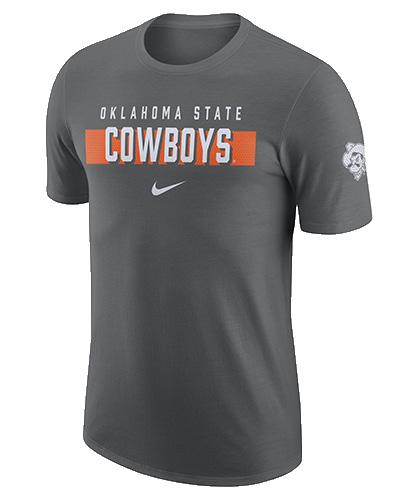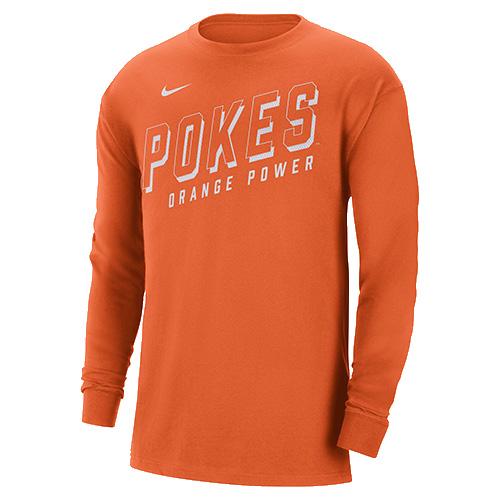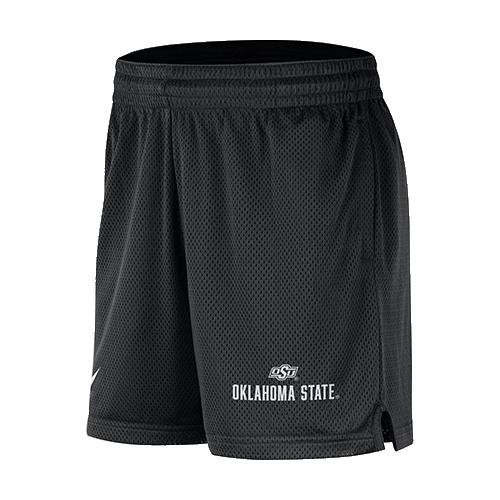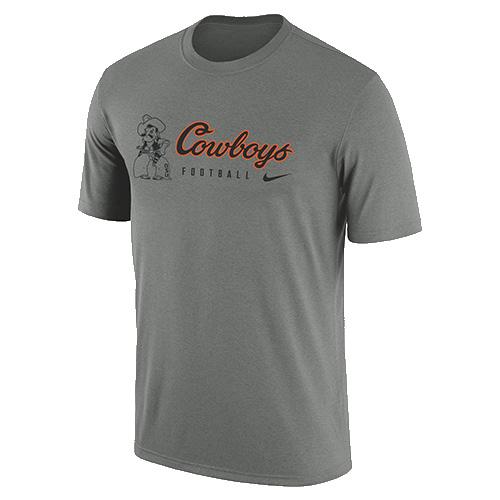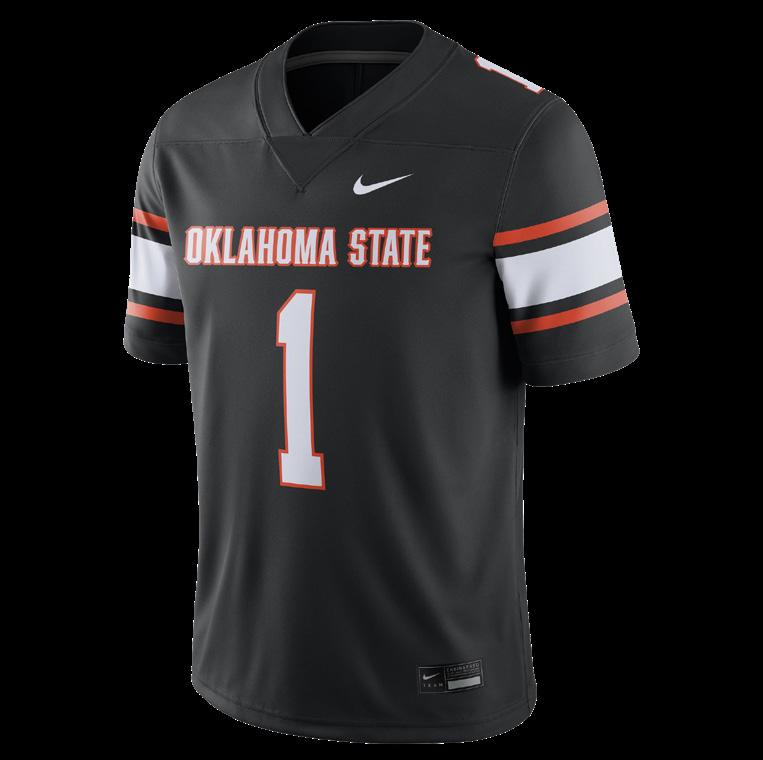




TTHE HE
PLACE FOR PLACE FOR PROPER CELEBRATIONS PROPER CELEBRATIONS ONLY ONLY


LLOCATED OCATED IIN N TTHE HE HISTORIC HISTORIC
ATHERTON ATHERTON HOTEL HOTEL








TTHE HE
PLACE FOR PLACE FOR PROPER CELEBRATIONS PROPER CELEBRATIONS ONLY ONLY


LLOCATED OCATED IIN N TTHE HE HISTORIC HISTORIC
ATHERTON ATHERTON HOTEL HOTEL


Is the grass really greener somewhere else? Or is it just more grass? We are about to find out.
We have moved into another athletic and academic year. It is the first in which we will see the true e ect of the transfer portal on OSU rosters. It is the first in which we will see a 14-team Big 12 Conference. It is the last in which Oklahoma State and Oklahoma will share conference membership, at least for the foreseeable future.

Those of us with a passion for college athletics have always been suckers for tradition. It is what separates us from professional sports. It is what unites us with those who attended our alma mater 50 years ago and with those who will attend 50 years down the road. It’s di cult when traditions are altered in any way.
But the fact of the matter is that one of the biggest traditions in college athletics is that of change. Change is as much a part of the fabric of college athletics as marching bands, referees and popcorn. In the not-too-distant past, the NCAA did not sponsor women’s sports. It seems incomprehensible now, but the merging of women’s teams under the umbrella of NCAA athletic departments was bumpy all around the country. And that was in the 1980s, not exactly the dark ages. It was a break of tradition for the men to share their facilities (not to mention an athletic budget) with women’s teams.
Traditions aren’t always good.
Oklahoma State spent 32 years as a member of the Missouri Valley Conference. That stretch represents a longer period than the Big 12 Conference has been in existence and longer than the entire lifespan of the Big Eight Conference And athletics on campus flourished to the point that one writer from The Oklahoman suggested that the Big Seven
join Oklahoma A&M instead of the other way around.
Our mascots in Stillwater used to be Tigers and Aggies before we became Cowboys and Cowgirls. Talk about a tradition changer. We all know graduates of a certain age who proudly display their Oklahoma A&M diplomas. Most would never consider exchanging it for one that said Oklahoma State.
Traditions change. They grow. But most of all, they are very personal to each of us. The norm to us now was not always the societal norm.
Combine realignment with the hectic world of Name, Image and Likeness, and fans of college athletics are under siege from all sides — and so are traditions. Our present is hard to reconcile with our past. And the future looks almost beyond comprehension. The Cornhuskers and Tigers have been replaced by Knights and Cougars as conference opponents. The NIL era has transformed some of yesterday’s OSU heroes into tomorrow’s opponents.
The rough seas of modern-day college athletics could be enough to make some fans question their passions. The opponents are changing, the rosters are changing, the definition of a studentathlete is being reinvented before our eyes. It’s understandable that diehard fans question where we are headed. The climate and pace are a lot to absorb for us tradition-loving creatures of habit.
But here’s the thing … for every OSU student-athlete who changes colors, there are literally hundreds who have stayed. And then there is realignment. The gift that has been giving forever, it seems. But is the trauma really that traumatic?
Imagine that you are attending a game at Lewis Field in 1988. As Barry is making his way toward the Heisman, a friend tells you that in 2021 Baylor and Oklahoma
State would not only be conference rivals, but they would play in front of a packed stadium in Arlington, Texas, in something called a conference championship game with both teams ranked in the top 10 with a slot in the College Football Playo possibly on the line?
Things have changed since someone wore jersey No. 21.
We can adjust to change. We’ve done it numerous times. These new challenges are just the latest hurdle that needs to be cleared.
Maybe the grass is greener somewhere else for some of our studentathletes. Maybe the grass is greener for some of our conference brethren. Maybe not.
In June, a tweet by a national media outlet caught my eye. During the 2022-23 athletic year, there were only six Power Five schools that failed to qualify for a bowl game, the NCAA men’s basketball tournament or the NCAA baseball tournament. Two of those six schools were Big 12 expatriates. Tweets of that nature, of course, are often unfair, and incomplete. But let’s be honest, Oklahoma State hasn’t been in that territory since the 1970s.
The point is not to speak poorly of our former conference brethren. Athletic programs have peaks and valleys. Those programs have known successes before, and they will again. The point is simply that the grass is not always greener
We are in a period of transition with our student-athletes and with our conference membership. It’s a little scary. It’s new. It’s a challenge. It’s a blank page.
The search for greener pastures by some, could lead to some golden opportunities for those who stay.
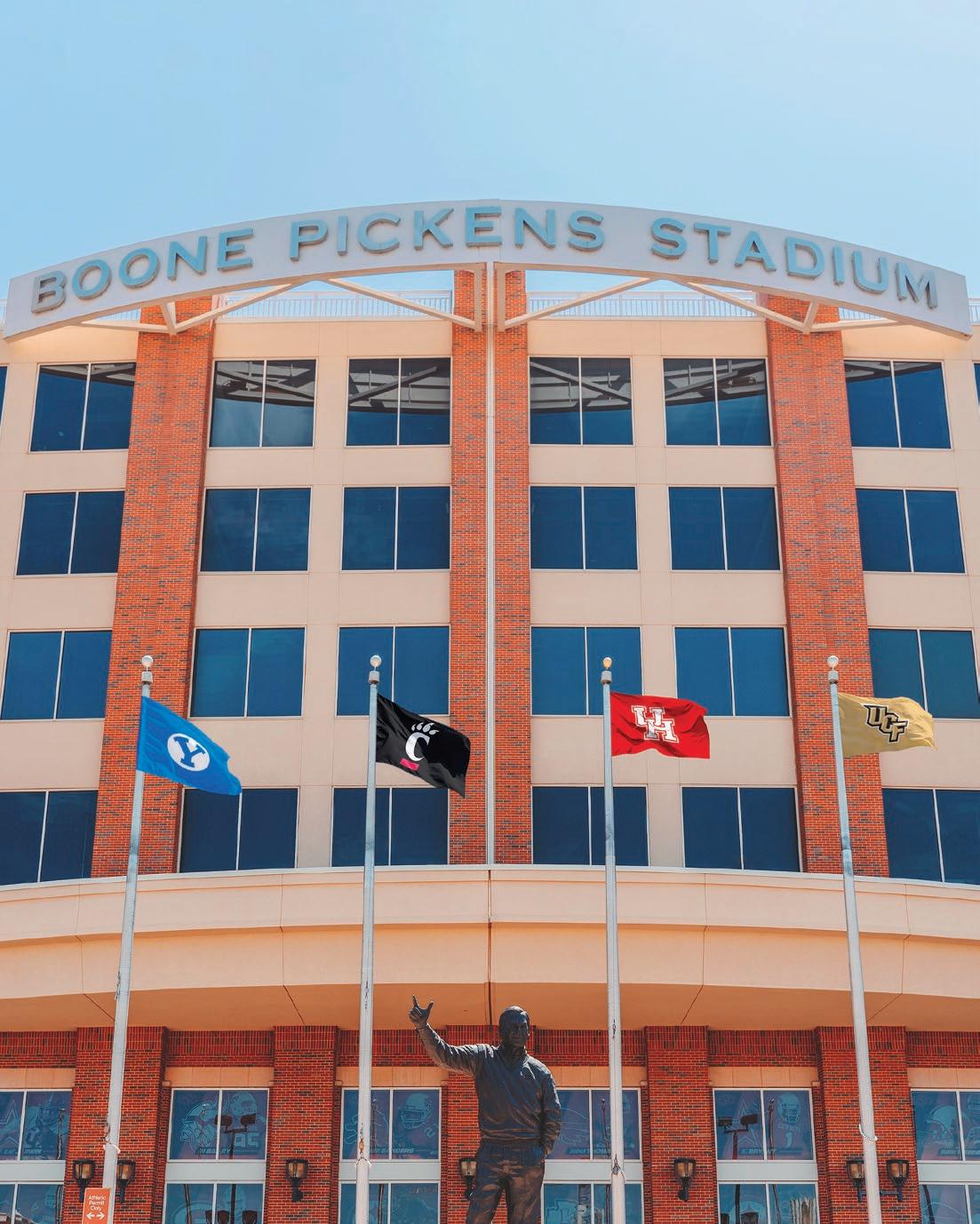





POSSE Magazine Sta
EDITOR-IN-CHIEF / SENIOR ASSOCIATE ATHLETIC DIRECTOR KEVIN KLINTWORTH
SENIOR ASSOCIATE ATHLETIC DIRECTOR
ART DIRECTOR / DESIGNER
PHOTOGRAPHER / PRODUCTION ASSISTANT
JESSE MARTIN
JORDAN SMITH
BRUCE WATERFIELD
ASSISTANT EDITOR CLAY BILLMAN
CONTRIBUTING PHOTOGRAPHERS
LANDRY BLEDSOE, GEORGE BULARD, BEN COHEN, JEROD HILL, BRADEN KING, MAX MOODY, HANNAH PETERS, RYAN SCHROEDER, PHIL SHOCKLEY, ADDISON SKAGGS, ABBY SMITH
CONTRIBUTING WRITERS CLAY BILLMAN, HALLIE HART, GAVIN LANG, KEVIN KLINTWORTH, WADE MCWHORTER
Development (POSSE) | 405.744.7301 P
ASSOCIATE AD / ANNUAL GIVING
PUBLICATIONS COORDINATOR
ASSISTANT AD / ANNUAL GIVING
ASSISTANT DIRECTOR OF ANNUAL GIVING
ASSOCIATE AD / DEVELOPMENT
ASSOCIATE AD / DEVELOPMENT
SENIOR ASSOCIATE AD / EXTERNAL AFFAIRS
SENIOR ASSOCIATE AD / DEVELOPMENT
ASSOCIATE AD / DEVELOPMENT
ASSISTANT DIRECTOR OF ANNUAL GIVING
ATHLETICS PROJECT MANAGER
OSU POSSE
ELLEN AYRES
CLAY BILLMAN
BRAKSTON BROCK
STETSON DEHAAS
MATT GRANTHAM
DANIEL HEFLIN
JESSE MARTIN
LARRY REECE
SHAWN TAYLOR
ADDISON UFKES
JEANA WALLER
102 ATHLETICS CENTER
STILLWATER, OK 74078-5070 405.744.7301 P 405.744.9084 F
OKSTATE.COM/POSSE

POSSE@OKSTATE.EDU
ADVERTISING 405.744.7301
@OSUPOSSE
EDITORIAL 405.744.1706
At Oklahoma State University, compliance with NCAA, Big 12 and institutional rules is of the utmost importance. As a supporter of OSU, please remember that maintaining the integrity of the University and the Athletic Department is your first responsibility. As a donor, and therefore booster of OSU, NCAA rules apply to you. If you have any questions, feel free to call the OSU O ce of Athletic Compliance at 405-744-7862
Additional information can also be found by clicking on the Compliance tab of the Athletic Department web-site at okstate.com
Remember to always “Ask Before You Act.”
Respectfully,
BEN DYSON ASSOCIATE ATHLETIC DIRECTOR FOR COMPLIANCEDonations received may be transferred to Cowboy Athletics, Inc. in accordance with the Joint Resolution among Oklahoma State University, the Oklahoma State University Foundation, and Cowboy Athletics, Inc.
POSSE magazine is published three times a year (Fall, Winter, Spring) by the Oklahoma State University Athletic Department and the POSSE, and is provided to current members of the POSSE in print or digital format based on annual giving level. Magazine subscriptions available by membership in the POSSE only. For membership information, visit okstate.com/posse. To change a mailing address, call 405-744-7301 or email posse@okstate.edu. Postage paid at Stillwater, OK, and additional mailing offices.
Oklahoma State University, in compliance with Title VI and VII of the Civil Rights Act of 1964, Executive Order 11246 as amended, and Title IX of the Education Amendments of 1972 (Higher Education Act), the Americans with Disabilities Act of 1990, and other federal and state laws and regulations, does not discriminate on the basis of race, color, national origin, genetic information, sex, age, sexual orientation, gender identity, religion, disability, or status as a veteran, in any of its policies, practices or procedures. This provision includes, but is not limited to admissions, employment, financial aid, and educational services. The Director of Equal Opportunity, 401 General Academics Building, OSU, Stillwater, OK 74078-4069; Phone 405-744-1156; email: eeo@okstate.edu has been designated to handle inquiries regarding non-discrimination policies. Any person (student, faculty or staff) who believes they are experiencing discrimination may discuss his or her concerns and file informal or formal complaints of possible violations of Title IX with OSU's Title IX Coordinator, 405-744-1156.
This publication, issued by Oklahoma State University as authorized by the Senior Associate Athletic Director, was printed by Modern Litho at a cost of $2.87 per issue: 3,000. | August 2023 | Copyright 2023, POSSE magazine.
All rights reserved.
ORANGE
At OSU, opportunities are abundant. We provide great scholarship programs to help you elevate your success and academic excellence. Apply by Nov. 1 to be considered for most competitive OSU scholarships. apply.okstate.edu


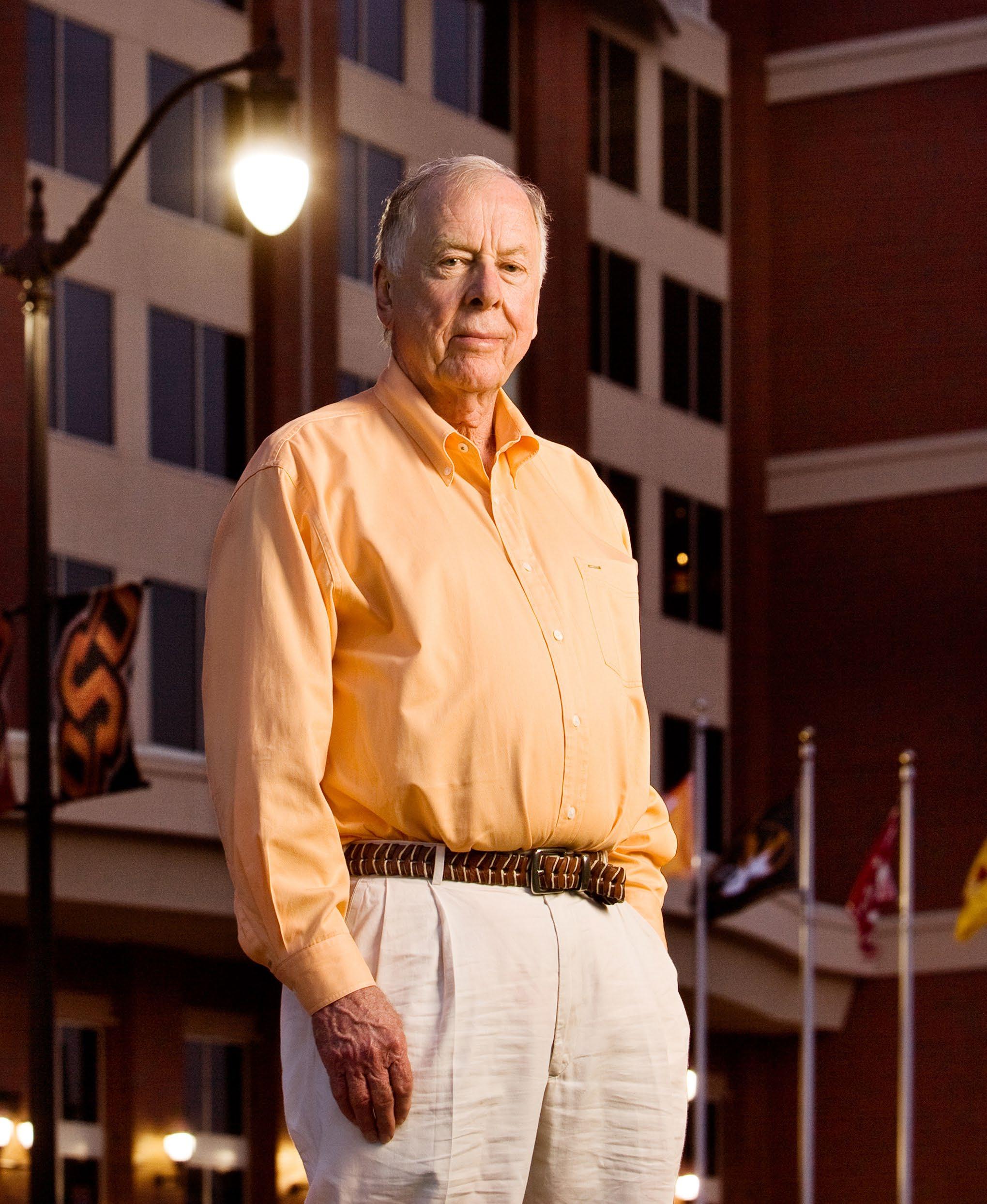
Oklahoma State University will receive a $120 million gift from the T. Boone Pickens Foundation, thanks to the generosity of the late OSU alumnus and philanthropist.
A majority of the gift — $63.7 million — will go toward student scholarships through the Pickens legacy scholarship program. Additionally, $25 million will support the recently announced OSU Human Performance Innovation Complex. The facility will house the Human Performance and Nutrition Research Institute (HPNRI) and the Cowboy Football Center. The gift also includes plans for renovating and reconstructing Karsten Creek, home of the Cowboy and Cowgirl golf teams.
Pickens’ legacy now approaches $650 million in gifts to his alma mater.


Gretchen Garrett, an incoming freshman and Opportunity Orange Scholar, poses with the Cowgirl Tennis team prior to a match this spring. The 2023 graduate of Kingfisher High School led the OSU Spirit Run at the Michael and Anne Greenwood Tennis Center.
Opportunity Orange Scholars is designed for young adults with intellectual disability to be fully immersed in the OSU experience, living and learning on campus as they pursue a two-year, non-degree academic certificate in Career and Community Studies.

 Story by
Story by

Joe Bob Clements has had an a nity for Collin Oliver since the Oklahoma State junior defender was on the camp circuit in high school.

“We had him in camp here (during high school) and I basically ran him through linebacker drills to evaluate, and Jim (Knowles) came up and said, ‘Well, we could use him as a linebacker right now,’ and I was like, ‘No, you need to go find your own linebacker, he’s gonna sack the quarterback for me. This one’s mine,’” said Clements, who was Oklahoma State’s defensive line coach at the time.
So when first-year defensive coordinator Bryan Nardo took over the OSU defense and transitioned from a four-man front to a three-man front, Clements — who is now Oklahoma State’s linebackers coach — didn’t hesitate when the question came up of who to take from the line and slide back to the linebacker position. The same talent that Clements’ previous boss thought would be a great linebacker.
“I didn’t even have an opportunity to (talk to Oliver about moving), to be honest with you, as Coach Clements, before I got here, said ‘Hey, this is our plan moving forward.’ And Collin is such a great kid because he said, ‘Whatever we can do to win,’” Nardo said.
Oliver sees some similarities in his new role compared to the LEO role he played under the previous defensive scheme. He was tasked with dropping into coverage at times from the LEO position, as well, but now in Nardo’s scheme, Oliver will be starting most snaps five yards o the ball instead of lining up along the line.
“I think it’ll be a good amount of similarity there,” Oliver said. “Obviously I won’t be on the line every single play, but as a LEO, we had a couple of times where we were backed up — we weren’t in a linebacker position, but we were over guards, reading the guard. So there’s a good amount of similarity there … and obviously in our blitzes, you can compare them to rushing the quarterback.”
He will still get his opportunities to rush the quarterback, which he was successful doing along the line. In his true freshman season, he earned unanimous Big 12 Defensive Freshman of the Year honors — as voted on by the league coaches — thanks to his 11.5 sacks, which ranked seventh among all FBS athletes.
While he will be playing five yards further from the quarterback most snaps now, his previous success rushing the passer will have to be in the back of the mind of o ensive play callers and linemen.
“It makes us have multiple looks, it makes us very dynamic, and it ultimately is what’s best for that position, because trying to game plan him every week — ‘Where’s he going to line up and why?’ — and then all of a sudden he lines up here and blitzes or he lines up here and drops and does it from both angles,” Nardo said. “I think it can make it a lot of fun for us moving forward.”
It’s not as though Oliver is going into the linebacker position hamstrung. Having started the past two years, he already has the feel for the speed of play that it will take playing in the heart of a defense going up against the elite o enses that litter the Big 12 Conference.
Perhaps more importantly, is the fact he does have experience playing the position — albeit at the high school level.
In his early years of high school, he played some linebacker at Edmond Santa Fe before making the full-time move to linebacker as a junior — which really earned him notoriety from college football programs. He did have several college programs that were looking to sign him as a linebacker (including an o er from current two-time defending national champion Georgia), with the Cowboys being one of the lone options originally wanting him to move down to the defensive front.
He had been so impressive at the linebacker position in high school, that he was considered the ninth-best linebacker prospect by ESPN in the 2021 recruiting class.
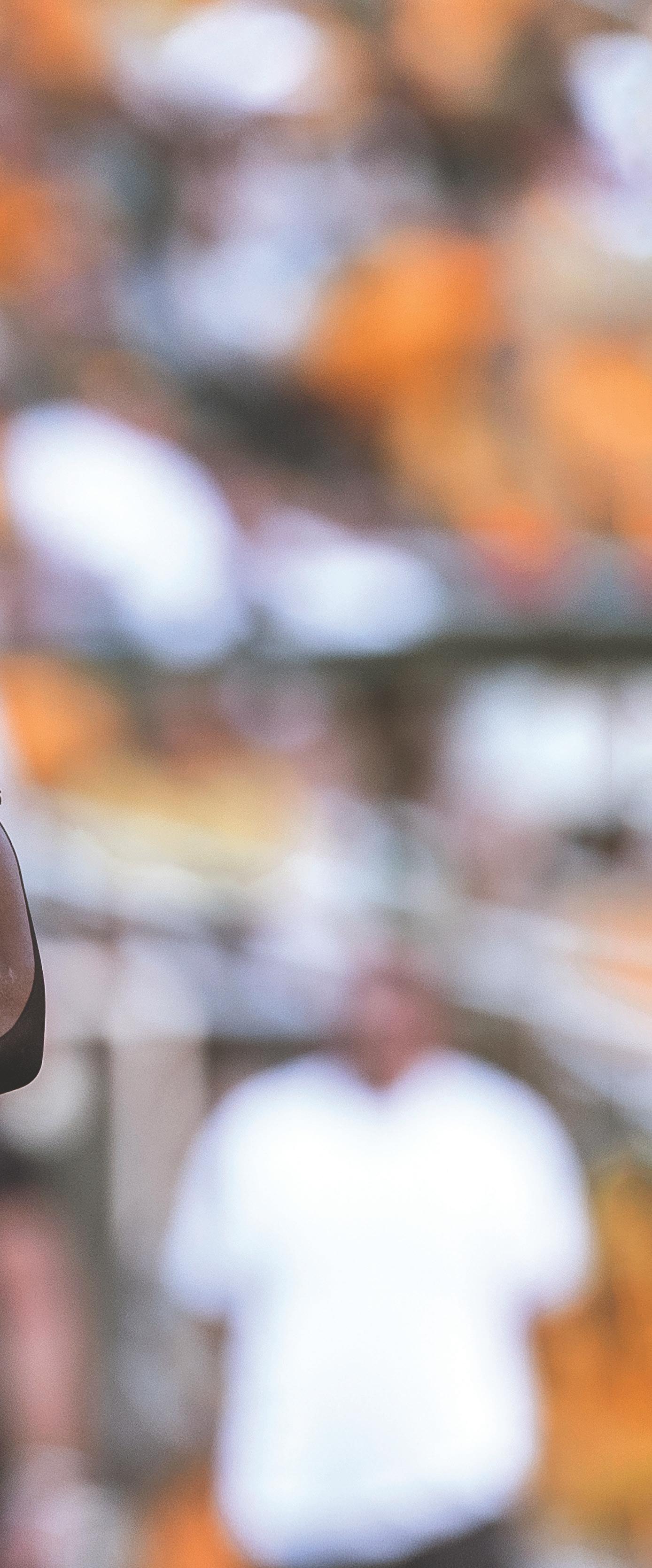

“(Playing linebacker in high school) made it very comfortable,” Oliver said. “Realizing that I played the position in high school and I’m comfortable playing it, as well as the fact that I’m not going to fully be getting away from what I’ve shown that I can do on the defensive line.
“So, it was a mixture of both, knowing their future plans and realizing I have the potential possibly be a good fit for this defense.”
In the early stages, he wasn’t completely sure about the fit, though.
He still had the mindset of an edge rusher while trying to relearn the linebacker position, which as he found out, isn’t conducive to being a rock in the middle of the defense.
“If you were going to watch the film, I was a full head of steam every single play, and you can’t do that at the linebacker position,” Oliver said. “You obviously need to have a motor, but it needs to be able to turn on and o — whereas on the defensive line, every play it’s all steam. That’s one of the big adjustments I had to go through and definitely got better at with time.”

The excitement about the move back to his old position was audible in Oliver’s voice. Even though he knows his past experience at the position doesn’t necessarily equate to instantly having a feel for it at the college level, he’s looking forward to how it will impact his play now and in the future.
“This is a whole new position in college, and it’s bound to be more di cult than it was in high school,” Oliver said. “Honestly, the expectations were to come in and learn as I go. I knew I wasn’t going to fully understand what it truly takes to be a linebacker in the Big 12 — or in a Power 5 conference in general — but just learning day by day and understanding the schemes and why certain things need to be done at the linebacker position. Learning all that little stu , day by day, it’s still going to continue to help me throughout the fall.”
Some of the excitement for Oliver is also returning to a room with the coach that worked with him his first year on campus.
Having Clements coaching the linebackers made it a bit easier for Oliver to open up to the move, as well, as he was already familiar with his “intense” coaching style — as Oliver put it with a laugh.

And his position coach seems to think he’s happy with the move, as well.
“From what I can tell you, he has a smile on his face
of veterans on the defensive side over the past two years.
The coaches said he’s more of a quiet leader among the defense — picking his moments when to be vocal in the heart of the secondary — and that he is more of a “leader by example.” And what better way to lead than to make a position change despite being the top performer based on statistics at his previous position.
“I think he’s the type of guy that gets his point across his way,” Clements said. “Leadership comes in all di erent styles, and really the important part is if the style is e ective or not. And I can tell you from the attitude of our teammates throughout the (o season) it’s as good as I’ve seen since I’ve been here — if not better.”
For college coaches, there’s that fine line to walk with their student-athletes in terms of what is best for the team and what is best for the future prospects of the player. In this instance, the blending along that line was obvious for all parties involved.
“We always look at what’s best for our players. Now, we don’t sacrifice what’s best for the team to do best for one individual, but you always want what’s best for your players,” Nardo said. “You want to see them be the best versions of themselves every day. You want to see them succeed …
“We want to win games. If we win games that’s best for everybody. That’s our ultimate goal and trying stay on that
Listed at 6-foot-2, 235 pounds, Oliver has “excellent” measurables for a college defensive end, according to Clements. However, that’s not the ideal size for an edge rusher at the next level.
The average weight of an NFL defensive end is around 275 pounds, whereas the average weight of an NFL linebacker is around 245 pounds. For comparison, recent Cowboys standout Malcolm Rodriguez was listed at 225 pounds as a rookie linebacker for the Detroit Lions — for which he started 15 games fresh out of Oklahoma State.
And to have somebody like Rodriguez who was recently within the program — and some of the other talented linebackers who have gotten an opportunity at the NFL — has given Oliver a chance to see what it will take for him to have a shot of potentially catching the eye of professional scouts.
But Oliver also understands that those previous Pokes played linebacker in a di erent scheme.
“I’ve watched a couple of those guys — especially Malcolm and Devin Harper for one season — just to see how they would play that position,” Oliver said. “I’ll watch film from other teams that run our same scheme to look for things that I can take away from them — how they play their defense, assessing what they do in certain situations and noticing how they feel about plays, how they move regarding their formations.
“So a lot of film watching has been going on.”
The move in positions won’t necessarily box Oliver into the linebacker position at the next level, though, according to the coaching sta .
“Now you’re not pigeon-holed into one thing,” Nardo said. “Maybe (NFL) people think he’s a great fit for a linebacker and then someone says, ‘Hey, I love the way he rushes the passer. I think we could bring him in and put 20 pounds on him and make him a bigger defensive end.’ And he can do that.”
“I think in the next level, even if we would have stayed with the previous defense, he would have had to be considered as an outside 3-4 linebacker,” Clements said. “And on the negative side, it would be, ‘Well, we don’t see him doing a lot of di erent coverage aspects that we’re going to ask our outside 3-4 NFL linebacker to do. Well, now they’re going to get to see that, and you’re just going to see an athlete that can get it done.”
Before the NFL comes calling, though, Oliver will have to prove himself capable of playing linebacker now at the college level. And he said he knows that there is still plenty to work on even beyond what he began honing in on during the o season. That’s where the coaches will continue to work with him, even into the season, to accentuate his full potential in the new defensive scheme under Nardo.
“He just needs to look at changing where his eyes are,” Nardo said. “His eyes are used to being on the tackle’s head, now they need to be on the tailback. At linebacker, the farther away you get from the ball, the faster your matchup is, but the slower the game can become.
“So we’re telling Collin, ‘Hey, the speed of the game is going to be what you’re used to, but we’re going to back you away from that first initial contact.’ So he’s going to see more and we’re going to train him to keep his eyes focused on what he needs to read. Because if you see a little, you actually see a lot, but if you try to see too much, you see nothing.”


Cowboy freshmen Ike Esonwune (25) and Kam Franklin (12) pose for OSU Athletics photographers Mackenzie Janish and Dylan Baisden. All 130 players on the OSU roster took part in the July photo session for social media content, video board graphics and other publications. The multi-station shoot was held in Boone Pickens Stadium, adjacent to Orange Power Studios. Located in the west endzone, the vast area features state-of-the-art LED lighting, assorted props and a number of photo backdrops (including custom OSU gra ti, a helmet wall and replica lockers).

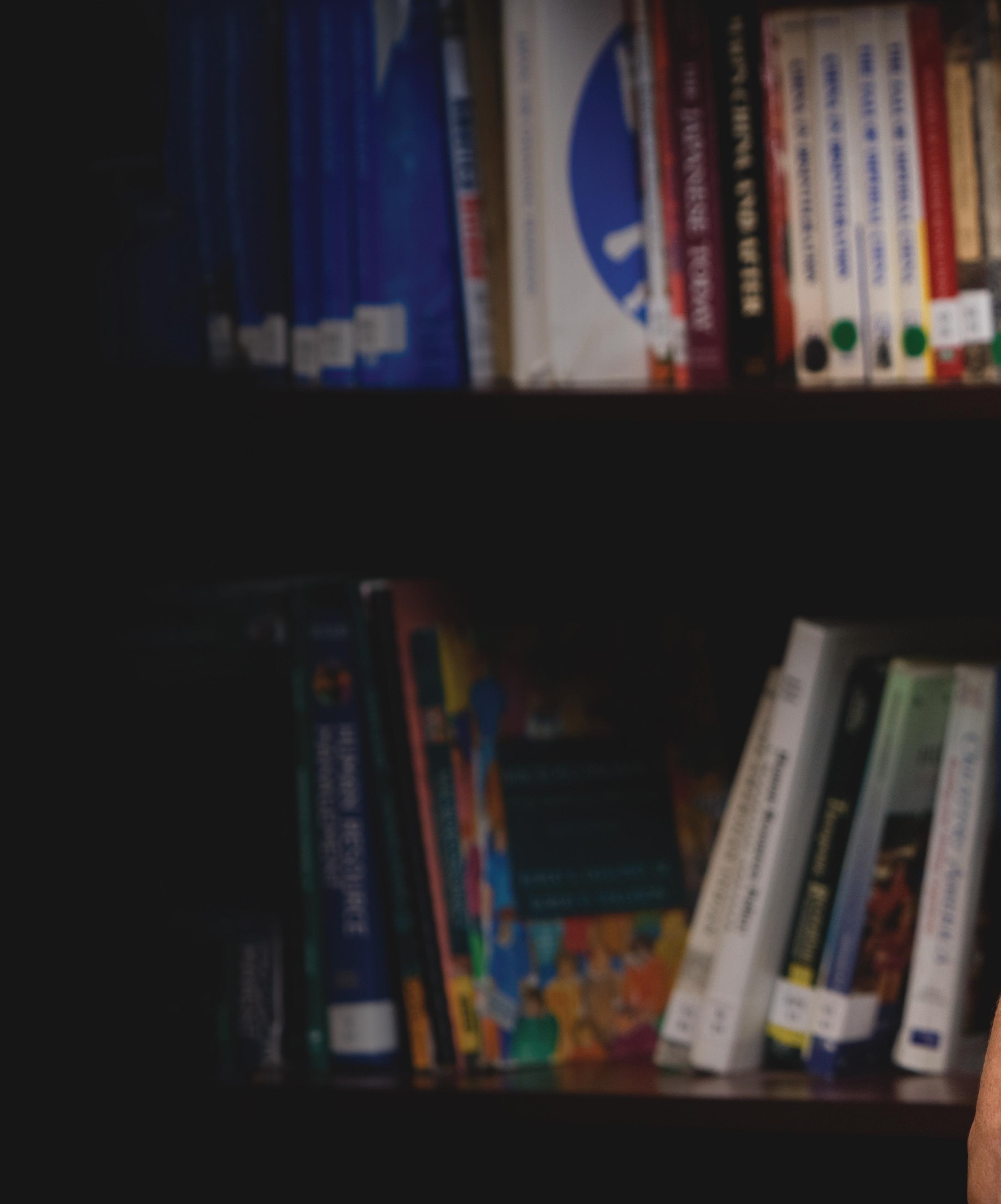 Hallie Hart
Bruce Waterfield
Story by
Hallie Hart
Bruce Waterfield
Story by

Dr. Marilyn Middlebrook sat behind her neatly decorated wooden desk and carefully pulled a card out of the beige envelope she received that morning.
Bearing the word “THANKS” in gold block letters, the card contained a heartfelt message in a substantial paragraph of ink.
This handwritten note came from graduate student Brad Lundblade, the Academic All-America o ensive lineman who played football at Oklahoma State from 2014-17.
It’s the latest addition to Middlebrook’s collection of around 200 thank-you letters that reside in a tidy drawer of file folders, and those are just the cards from the past couple of years.
When Middlebrook needs a morale boost during a stressful day in OSU’s Joe and Connie Mitchell Academic Enhancement Center, those thoughtful notes remind her why she does her job.
“It’s because I love what I do,” Middlebrook said. “I love the students. The sta is amazing, absolutely amazing. I guess that’s how I do it — I have great people to help me.”
Middlebrook, who has worked at OSU since 1983, stays busy as the Associate Athletic Director for Academic A airs.
For numerous student-athletes, that o cial title only begins to describe Middlebrook’s many roles.
She is a counselor, inviting advisees into her Athletics Center o ce that features comfortable seating and OSU-themed trinkets. She is a principal-like figure, using tough love and stern words when necessary to motivate students to do their classwork. She is a manager, guiding a sta of 12 and helping hundreds of students build schedules that accommodate team practices.
Above all else, Dr. Marilyn Middlebrook is Mom
“She’s preparing young people for the rest of their lives,” said Cowboy football coach Mike Gundy. “Nobody has had a bigger impact on OSU athletics than her, period. Any coach, any administrator — she’s going to play a factor in kids’ lives more than anybody (else).”


That is why generations of student-athletes a ectionately refer to Middlebrook as “Mom” or “Mama Marilyn.”
Athletes’ real-life parents know her, too — John Lucas II, the father of former Cowboy basketball star John Lucas III, still asks about Middlebrook when he talks to current coach Mike Boynton. The Cowboy community surrounds Middlebrook with genuine care, reflecting the way she treats student-athletes.
“I’m not sure we could pay her enough for all she does for the department,” Boynton said. “I’m very thankful that she’s here and that she’s dedicated to doing her job really, really well.”
If Middlebrook is in her o ce, then the door is open.
It’s not a cliché. It’s a literal statement.
Middlebrook takes an individualized approach to her job, and this starts with allowing student-athletes to visit whenever they choose. This welcoming culture pervades the academic center, so other sta members do the same.
“I’ve been here so long, and there’s a trust level that we’re able to establish,” Middlebrook said. “If I don’t know you, I can’t really help you very much until I get to know you, so we make an e ort to make sure we get to know every student.”
Several areas of life have equipped her for this. As a mother of three — including daughter Amy Randolph, who works in the academic center — Middlebrook knows how to embrace individuals for their distinct personalities. She is also a grandmother of nine, and nine unique frames display each grandchild’s photo behind her desk.
From an academic standpoint, Middlebrook understands the human mind. Middlebrook, who received two degrees from Emporia State in Kansas before obtaining her doctorate at OSU, has a background in psychology.
Her biggest lesson came from the classroom.
Middlebrook said teaching junior high students, particularly seventh graders, showed her the importance of tailoring her methods to individuals. Kids in this age group vary in nearly every way, from height to maturity level to learning style.
“If you can teach junior high,” Middlebrook said, “you can teach anything. I’m convinced of that.”

For Middlebrook, “anything” includes advising thousands of college students.
She started in a part-time position at OSU, o ering academic support to 10 football players when she was a doctoral student in the 1980s. Soon, that number ballooned to 40 or 50 student-athletes, including Mike Gundy.

The former starting quarterback said he went to college primarily to play football, and while Middlebrook understood that, she also helped him realize what he had to do to fulfill his academic goals.
Now, as a longtime coach, Gundy sees how Middlebrook continues to combine empathy and practicality while meeting with student-athletes.
“She has a gift of understanding young people, and she’s a realist,” Gundy said. “We all learn di erently.
“In my opinion, she has an understanding of how to get the most out of each one of our players, because she takes a genuine interest in them. She knows what are good

expectations, what are great expectations and also what are fair expectations for them.”
She knows because she listens.
In 1998, when Middlebrook began her role as the director of academics in the athletic department, her guidance was needed. With the position vacant for several months after the former director left, 11 football players had become academically ineligible.
Although Middlebrook joined the College of Education in 1988 and spent 10 years there, then-university-president Jim Halligan called her back to athletics, seeking a leader.
Middlebrook decided to meet with the football team, but she didn’t give the players a harsh speech.
She requested their advice.
“What’s the one thing that we could do to improve everything about learning?” Middlebrook asked.
Someone had an answer: “Do away with study halls.”
At the time, it was mandatory for student-athletes to attend large group study halls, but when Middlebrook heard the player’s idea, she changed the system
Middlebrook scrapped the study hall tradition, replacing it with individual study sessions.
Grades skyrocketed. Student-athletes were happier. Middlebrook, along with coworkers Agatha Adams and Alan Good, sacrificed significant time to make it happen.
“It wasn’t pretty at the beginning,” Middlebrook said. “It was tough, and it was hard, hard, hard work. Alan and Agatha and I probably averaged at least 16 hours a day implementing all this and being with the kids because you only have so much time for 500-plus kids, but it was working.”
Next, she decided to hire learning specialists who could work with student-athletes in specific fields of study. The sta grew over time, and Middlebrook credits her coworkers for the center’s success.
Technology improved, too, streamlining a once-tedious enrollment process and adding the option of online learning. Middlebrook helped bring about change for all OSU students, not only athletes, as she served on committees that transformed academic processes and policies.

Throughout this evolution, Middlebrook maintained her core focus of connecting with people.
She has built bonds not only with student-athletes, but also with the coaches who meet with her to discuss players’ schedules and academic progress.
Soon after Mike Boynton arrived on campus as an assistant men’s basketball coach in 2016, he noticed players such as Phil Forte and Jawun Evans calling Middlebrook “Mom.” It struck Boynton as an unusual nickname, but quickly, the moniker made sense.
“She takes on that with a badge of pride that she is, in a lot of ways, their mom away from home,” Boynton said. “She inspires me that she, at this stage in her life, is still pouring into other people the way she is. She certainly has served enough time doing that and could very well walk away and enjoy retirement at this point, so I admire her desire to continue to impact kids’ lives .”
The question of retirement arises often, and Middlebrook has a straightforward response: she plans to keep doing her job as long as she is alive.
This doesn’t mean her entire life revolves around work. Middlebrook considers family her No. 1 priority. She plays organ and piano at St. Francis Xavier Catholic Church, and she can make a mean lasagna.
But for 40 years, Middlebrook’s work at OSU has been much more than a job. It’s a channel for genuine, lasting connections.
Student-athletes, coworkers and coaches rallied around her three years ago when her husband, Dan, died suddenly, o ering constant support through tremendous grief.
From time to time, former student-athletes visit Middlebrook’s o ce to catch up on life. Josh Holliday , John Smith and Gundy have kept up with her as they have grown from students into coaches.
The thank-you notes continue to arrive, too.
When someone spends 40 years investing in other people and doesn’t intend to stop, there is no limit to the gratitude that can return.
Gundy has an idea for the biggest thank-you yet.
“I have mentioned this, and I hope that it will get done,” Gundy said. “ There should be a statue of her somewhere , outside of the academic center or somewhere.
“There’s nobody that deserves one more than her. That’s how strongly I feel about her and what she’s done for our athletic department.”

Cowboy senior Elijah Collins poses for OSU Athletics photographer and graphic designer Dylan Baisden in the Boone Pickens Stadium west endzone photo studio. Collins, a transfer tailback from Michigan State, and his teammates donned their new uniforms and posed with props in front of various backdrops to create content for the 2023 season.


 Clay Billman
Clay Billman

“Fred” Raschen III accompanied several relatives on a road trip to Oklahoma Agricultural and Mechanical College
“I had never been to Stillwater in my life,” the Vinita native recalls. “But I wanted to come down there to see what was going on … So all my aunts and my mother and I piled in the car and o we went.”
The cramped, three-hour ride was worth it. And it changed the course of Raschen’s life.
“The people were so friendly,” he says, “almost excited about the fact that you’re visiting.”
Fred instantly became an Aggie.
On July 1 of that summer, OAMC o cially became Oklahoma State University so the Aggie was now a full-fledged Cowboy.

“I was among the first class that started and graduated at Oklahoma State.”
Raschen studied business at OSU — insurance to be precise.
“Back in the day, OSU had an insurance degree, but it didn’t hold up well for some reason,” he explains. “I got into that due to one of the insurance people in Vinita. He had called me one day and wanted me to come down and talk to him, and I did. He said great things about it.”
But when he graduated in 1961, Fred quickly lost all fondness for the field. He took a job in Tulsa as head of the insurance department for the Auto Club of Oklahoma.
day, talking to people and so forth and so on … I went home and told my folks I was going to quit and find something else. But my dad said, ‘No, you’re not. That man gave you a job, and you’re going to have to stay there for at least a year.’
“I stayed a year and one day.”
Knowing he’d be due for military service, Raschen enlisted in the Air National Guard.
“They sent me down to Texas, and when they saw I had a degree, the first thing they asked was, ‘Do you want to be a pilot?’ I said, ‘Well, sure,’ so they sent me to Oklahoma City (for training).
“You know when you stand at attention, you have to put your heels together …”
Military regulations specifically call for feet at a 45-degree angle, with legs straight and heels touching.
“I have legs that aren’t like most other people’s,” he says.
“My knees were bumping in the middle. To be able to put my heels together, one leg had to go in front of the other. My legs just went like this, you know,” Fred explains, making a “V” with his palms. “I couldn’t do both so finally they said, ‘We will kick you out — they were going to court-martial me!”
“I said, ‘What the hell for?’
In 1962, Raschen returned to Tulsa and went to work at Patterson Steel Company doing inside sales for the longstanding fabrication company.

“That’s where I really fell in love with what I was doing. After a year, they wanted to know if I’d be interested in doing outside sales.”
Raschen wanted out from behind his desk so he began learning the true nuts and bolts of Patterson’s operation.
“They started training me and, just to become familiar with our equipment, they put me out in the shop. I worked on every machine, a week with this and a week with that, and there were a lot of machines, believe me.”
At the time, Patterson had a warehouse steel department, along with fabrication services and a division that made small parts.
“Finally, they decided it was time for me to go out so
them, Jim Gosting, was the manager of the Firestone store downtown. We’d get together a lot and so I went over there on a Saturday morning, and we were sitting there watching a football game … He got a call from the o ce and had to jump up and run down there to solve a problem or something. I said, ‘OK, I’ll just stay here and watch’ because I didn’t have TV at home. All of a sudden the front door opened, and this girl came in and says, ‘Who are you?’ I said, ‘Well, I’m Fred Raschen. Who the heck are you?’”
Loretta Reeves strolled past Fred into the kitchen.
“When she came walking back by, she said, ‘Tell Jim that I came over.’ And then she was gone.
“Near the end of the month — when school teachers run out of money — we would just kind of borrow from our neighbors,” Loretta explains. “Jim lived downstairs across from us so I just walked in that day, didn’t even say hello … went straight to the refrigerator and helped myself. I fixed a sandwich and then marched back to my apartment.”
The salesman was smitten.
In 1972, Raschen struck out on his own, starting C4 Industrial — named for his second son, Corey, and Ed, aka the “4th.”
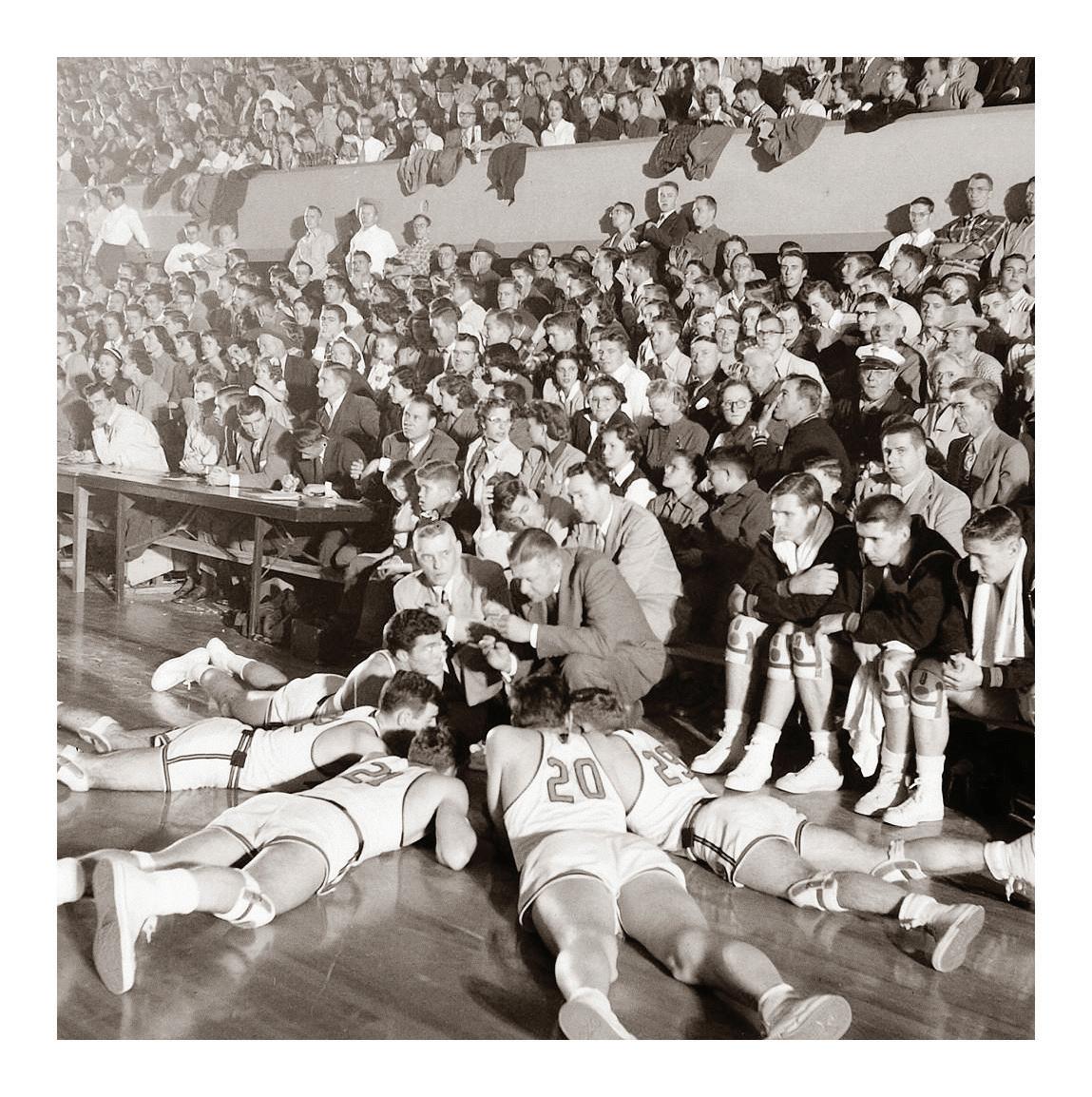
Their sister, Timi, was born in 1973 and missed out on being part of the company name. (To be fair, Fred didn’t think C4 was a permanent enterprise.)
However, due to a nationwide steel shortage, Fred was forced to pivot. You can’t sell what you can’t get.

“I had a bottom drawer file cabinet of customers that were buying steel from me. One of them called me and asked about drill bits. The biggest company in town was Marshall Supply Company, and this guy says they never had the drill bits and taps that he needed … The next thing you know, in one year we sold over $80,000 worth of drill bits out of that bottom drawer file cabinet.
“If somebody wanted something, I’d say, ‘When do you want it?’ If they said, ‘I need to have it tomorrow,’ I said, ‘It’ll be
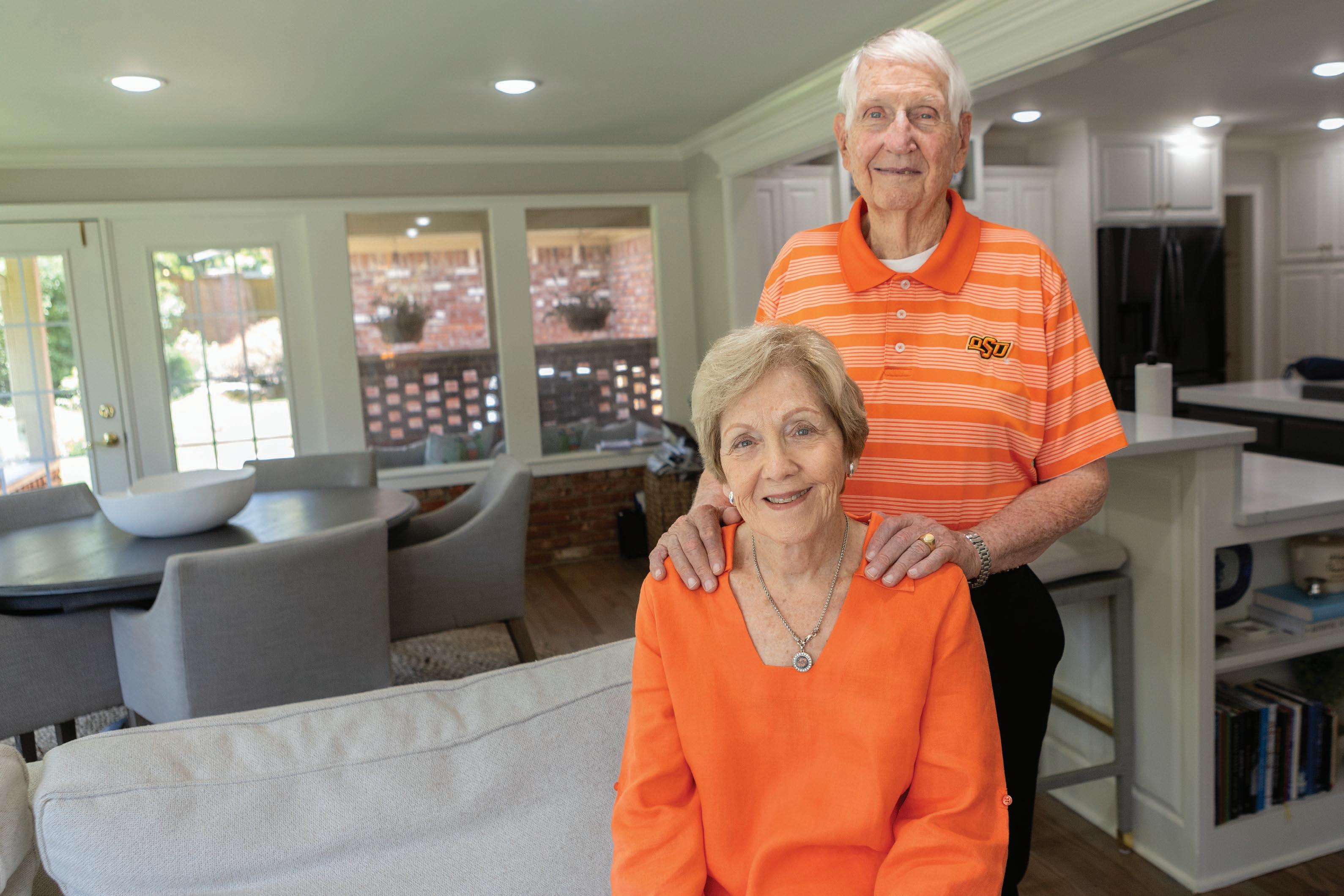 Fred and Loretta Raschen
Fred and Loretta Raschen
there today. Everybody said, ‘You can’t do that.’ And I said, ‘Well, maybe I can’t, but I am.’ It was like falling o a log to me.
“And that’s what we built our whole organization on. Serving people that can’t get the big boys to pay attention to them — and then suddenly, we’re one of the big boys.”
Sporting events have long been a pastime for Fred.
“I always liked athletics, even in high school,” he says. “Unfortunately, with those knees I was telling you about, I ran like a dry creek. I don’t know of really any athletic endeavor where you can stand in one spot.”
In lieu of competing, Fred found himself in the stands, cheering on his hometown Hornets or the Cowboys at Lewis and Gallagher Hall
Raschen recalls one particular game when the legendary — and often intimidating — basketball coach Henry Iba addressed the student body.
“During timeouts, Mr. Iba sat down while the player laid on the floor in a semi-circle. I remember one time, somebody threw a cup or something out on the court. He went over and picked up the thing and says, ‘I don’t care who did this, if that ever happens again, we will shut this game down, and all of you people who are watching will be asked to leave, and we’ll play this game just among us’… not exactly those words, but that’s what he meant. I’ll never forget that. People would listen when he was talking.”
As a junior at OSU, Ed Raschen was present to hear Mr. Iba talk publicly for one of the last times, at one of the most significant events in the history of the athletic department.
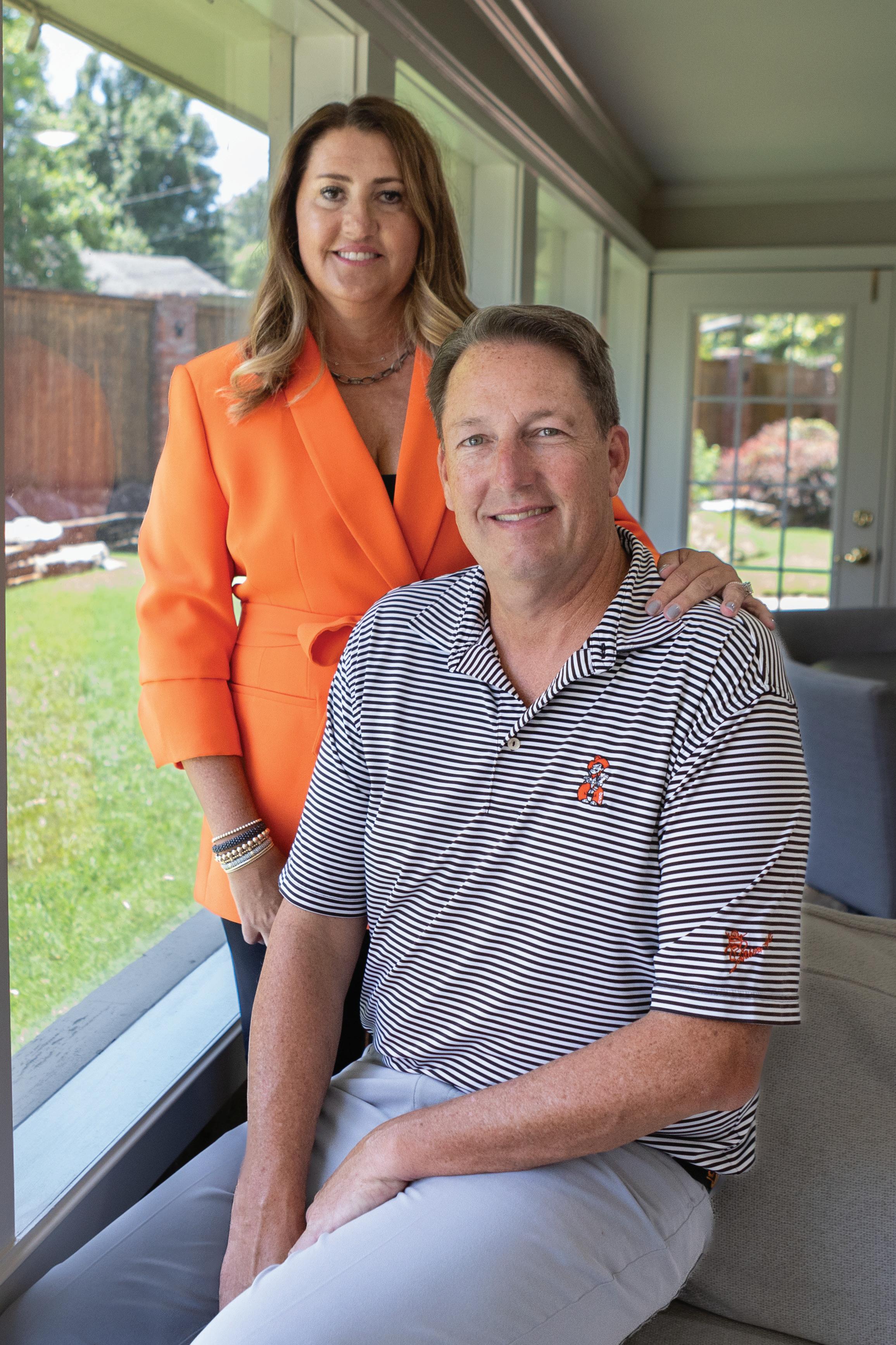
On April 11, 1990, a small group of media and fans gathered in the Varsity Room as Iba welcomed his disciple of Defense, Dedication and Discipline home as Leonard Hamilton’s successor.
“When Coach Sutton was announced, a buddy of mine Carey King — and I went to the press conference,” Ed recalls. “There were not very many people in there at all, hardly any students.”
It was a proud moment for the Oklahoma State family to welcome back a favorite son, and it ratcheted up Raschen’s love for Cowboy hoops.
“Man, we were die-hard basketball fans,” he says. “My fraternity, Sigma Chi, was really involved in basketball. We would camp out in line, so we got seats right behind the opposing bench. We had great seats.”
A few years later, Ed became fraternity brothers and friends with current OSU assistant Scott Sutton, who played for his father from 1992-94.
“Ed’s had a passion for Oklahoma State since the day I met him,” Sutton says. “I think when my father came here, there was obviously a lot of excitement, but there was a connection specifically with the Sigma Chi house because my father was a Sigma Chi. I think they all thought that was pretty cool, that a brother was coming home. That group of guys were diehard fans from the very beginning.
“When I decided to join Sigma Chi, there was a connection there with Ed, and we’ve been close ever since. One thing has never wavered, and that’s university and specifically for the athletic department. He and his family have been tremendous supporters.”
On campus from 1987-91, Raschen bore witness to some of the most storied names in OSU lore, including the likes of Barry Sanders, Thurman Thomas Michele Smith, Byron Houston, Cross … the list goes on.


It was there he also met the real MVP of his undergrad experience — his future wife. Clinton, Okla., native
Ed earned his business administration degree in May of that year, but despite several out-of-state job o ers, he wasn’t eager to jump into the “real world.”
“Now most people graduate in four years because they come in with so many extra classes,” Ed explains.
“Back when I was in school it wasn’t that way. I was dating Kathy at the time so I said, ‘You know, I’m going to take some time o .’ I got done in four years so I should have a break.”
Back in Tulsa at the Raschen household, Ed pleaded his case for a little post-graduation R&R.
“My dad was like, ‘You’re going to start right now.’”
“Don’t get me wrong, I’m not an IT guy at all, but I had one skill set that nobody else really had there.”
Ed successfully led C4’s transition from analog to digital and stayed on with his father’s company, picking up the tools of the trade.
“What he could do and what I could do were basically two di erent things for a long time,” Fred says. “Over the years, he just watched and learned.”
“I got to stay there and learn all of the sales techniques and everything my dad was so good at,” Ed says. “It worked out well.”
“Now he’s a hell of a salesman,” Fred adds. “I’d rather have him than anybody in town.”
Ed eventually moved to Oklahoma City when C4 opened a second branch. In 2002, the timing was right for Fred to hand the reins of the company to his son, who currently serves as CEO. Today, C4 Industrial employs nearly 40 people serving the south-central U.S. with operations in Tulsa, OKC
purchased a new business — Custom Components and Logistics — with two of his Acacia Fraternity brothers, Bob Haiges and Don Kirkland
The Raschen clan has long been devoted to Cowboy and Cowgirl athletics, whether it’s through season tickets or POSSE fundraising events. That includes Timi (a 1997 business grad), who serves as C4’s accounting manager, and her teenage daughter, Davis

“Fred would always come to the auctions and bring all the grandkids,” says Ellen Ayres, Associate AD for Development. Two of those grandchildren — Ed and Kathy’s daughters Claire and Caroline — are recent Spears graduates.

for every sport possible: football, soccer, men’s basketball, women’s basketball, wrestling, baseball and softball. As Cowboy VIP POSSE members, their giving includes Cowgirl Tennis, the Athletics Excellence Fund and Academic Services for Student-Athletes. Ed also serves on the board for Pokes with a Purpose, OSU’s NIL collective.
“We hardly ever miss a game,” Ed says. “It’s been a great connection for my dad and me because he probably couldn’t get to go to as much stu if we didn’t do it together. So that’s why we added women’s basketball tickets. We added softball, and we had never had baseball tickets, but now we have a suite at O’Brate Stadium.”
“He’s already told them he wants a suite for softball,” Fred adds, alluding to the proposed stadium in OSU’s new vision plan.
“Ed wants to be a part of it all,” Ayres says. “He wants to be where the action is, tailgating and everything.”
“In the early days, we would set up a couple tents in the stadium parking lot, and eventually it got a little bigger than just tailgating out of your trunk,” Ed explains.
“It’s fairly aerodynamic so we can take it where we want to go,” he says. “We’ve taken it on the road to West Virginia, to Iowa State, Kansas State a few times … New Orleans for the Sugar Bowl.”
At 8 ft. wide by 24 ft. long, the trailer boasts an orange, hydraulic roof — emblazoned with the phrase “THE COWBOYS ARE COMING AND HELL’S COMING WITH US” — along with seven TV screens, LED lighting, sound system, built-in ice chests, granite countertops and even a train horn.
At home games, the Bullet Bar has become a popular pregame (and postgame) attraction. Ed is quick to point out that all are welcome, including fans of opposing teams.
“We went down to Ole Miss one time, and their “Grove” is known for supposedly having the best tailgating. It was the worst experience I’ve ever had. If you don’t know somebody, they won’t even talk to you. They would never give you something to drink or eat or anything.
“If anybody who comes to an OSU game has that type of experience and goes back and talks badly about Stillwater and Oklahoma State, it would upset me.
“Everyone’s welcome here. That’s important to us.”
As the gameday gatherings began to outgrow their accommodations, Ed was inspired to build a mobile tailgate trailer — a party on wheels if you will.

“I went to a TCU football game in 2014, and there was a guy who had a custom trailer. I took a lot of pictures and when I came back, I showed a couple of guys I work with. They said, ‘We think we can build one of those.’”
The “Bullet Bar” was born.

One of the perks of working in the metal fabrication industry is that you have access to skilled coworkers and suppliers, he says. And they had just the right resources to do it.
“We reached out to our customer base — people that have fab shops and machine shops and all this other stu — and asked, ‘Hey, could you build this part of it?’… ‘How much do you think it will cost?’
“Of course, we missed it by three or four times. But it’s been well worth it. It’s been a lot of fun.”
The Bullet Bar project may have exceeded Ed’s budget, but it also surpassed his original vision.


The Priority Point System provides a fair, consistent and transparent method of providing benefits to donors in exchange for their financial investments in OSU athletics.
Donors gain points three ways:
Contributions
All current and lifetime contributions (cash or stock) are worth three points per $100 donation. Planned (deferred) gifts in the new Leave a Legacy Endowment Campaign will receive one point per $100.
Commitment
Donors will earn one point each year for purchasing season tickets (one point per sport annually), as well as one point for each year of POSSE donations.

Connection with the University Donors (or their spouses) who are OSU Alumni receive a one-time 10 point bonus, as do OSU faculty/sta and letterwinners.
Points never diminish and will carry over to subsequent years. Donors retain all previously earned Priority Points in their giving history. For questions about the POSSE Priority Point System, email posse@ okstate.edu or call us at 405-744-7301.
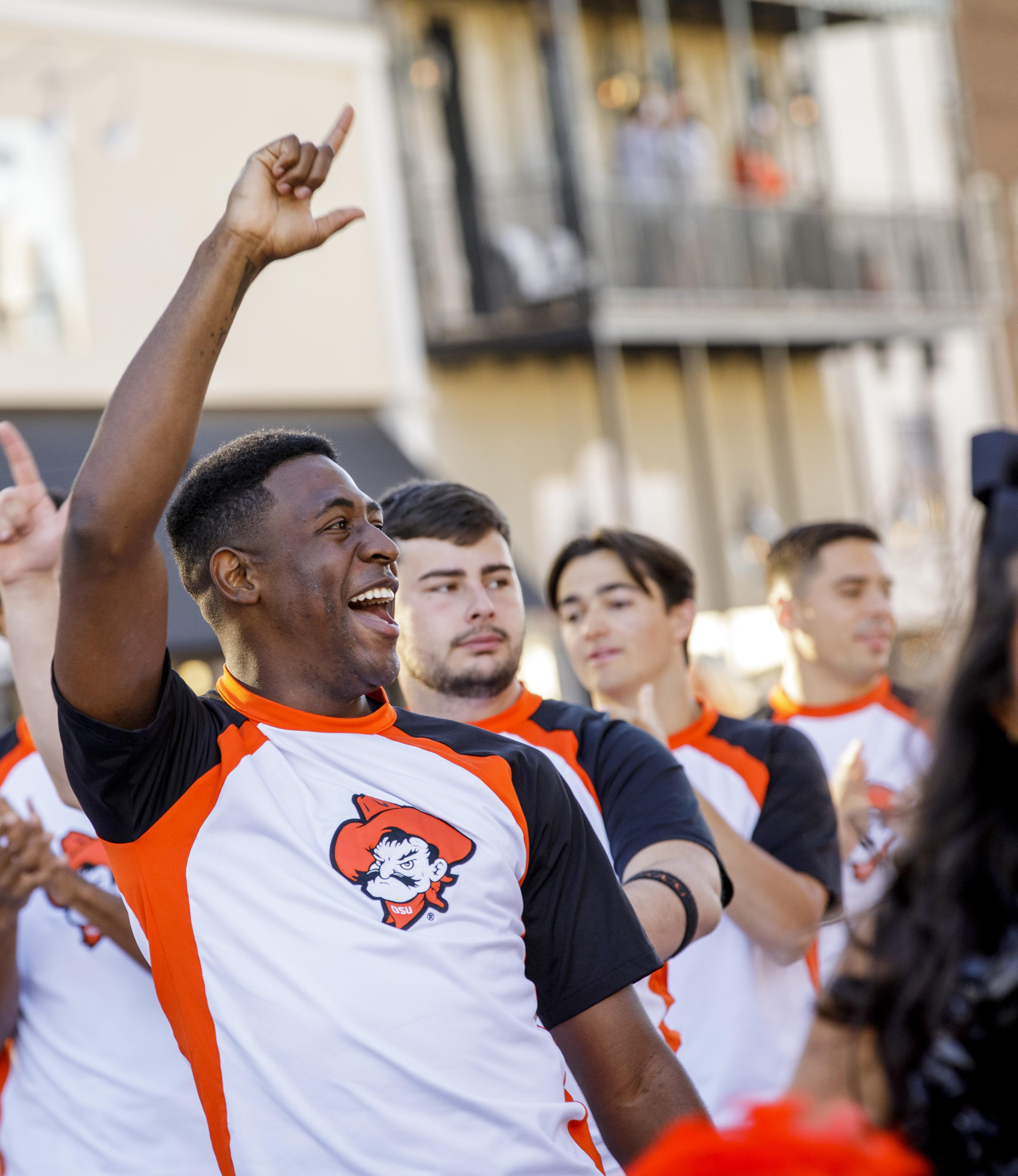

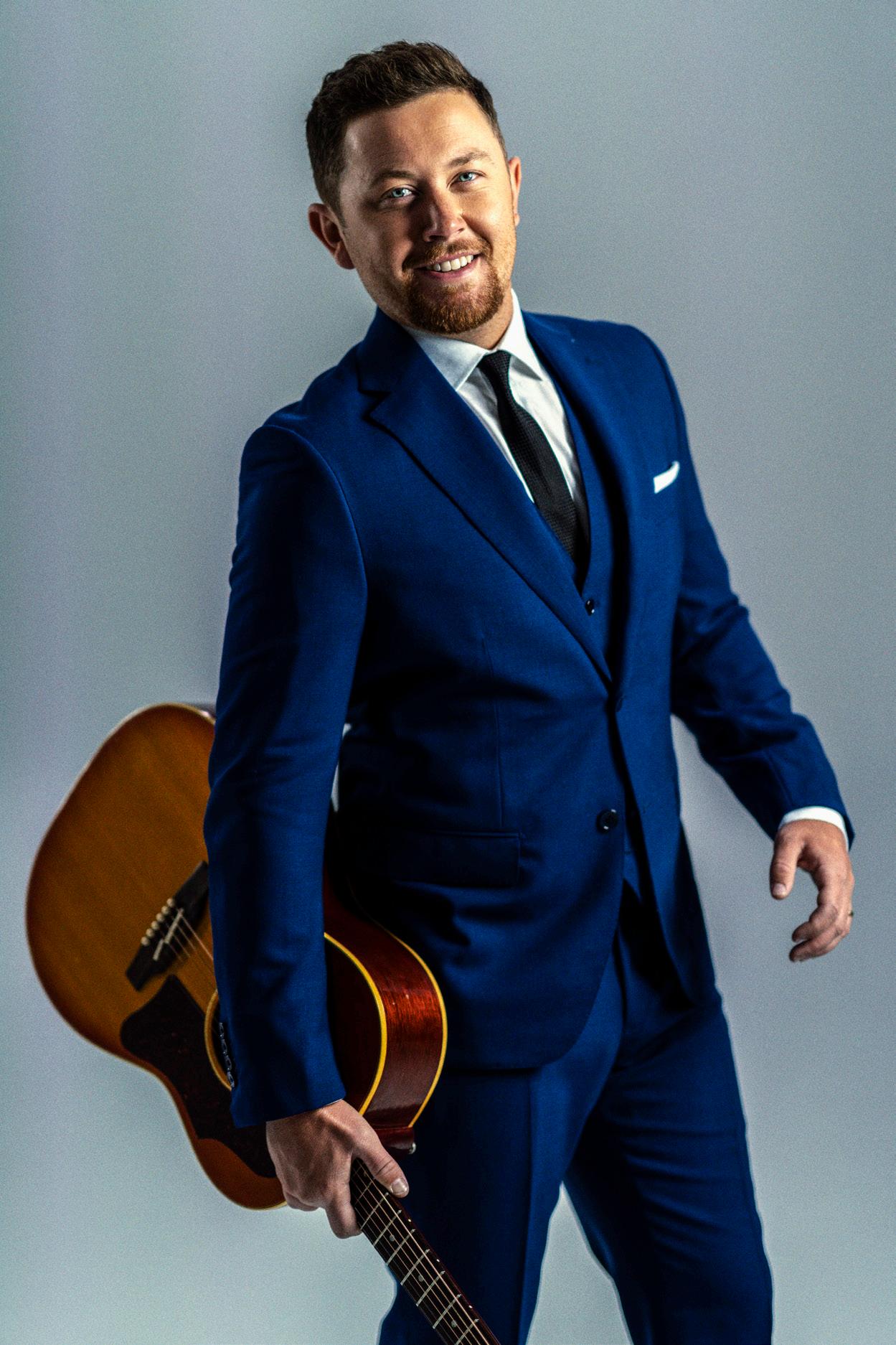
Kicko
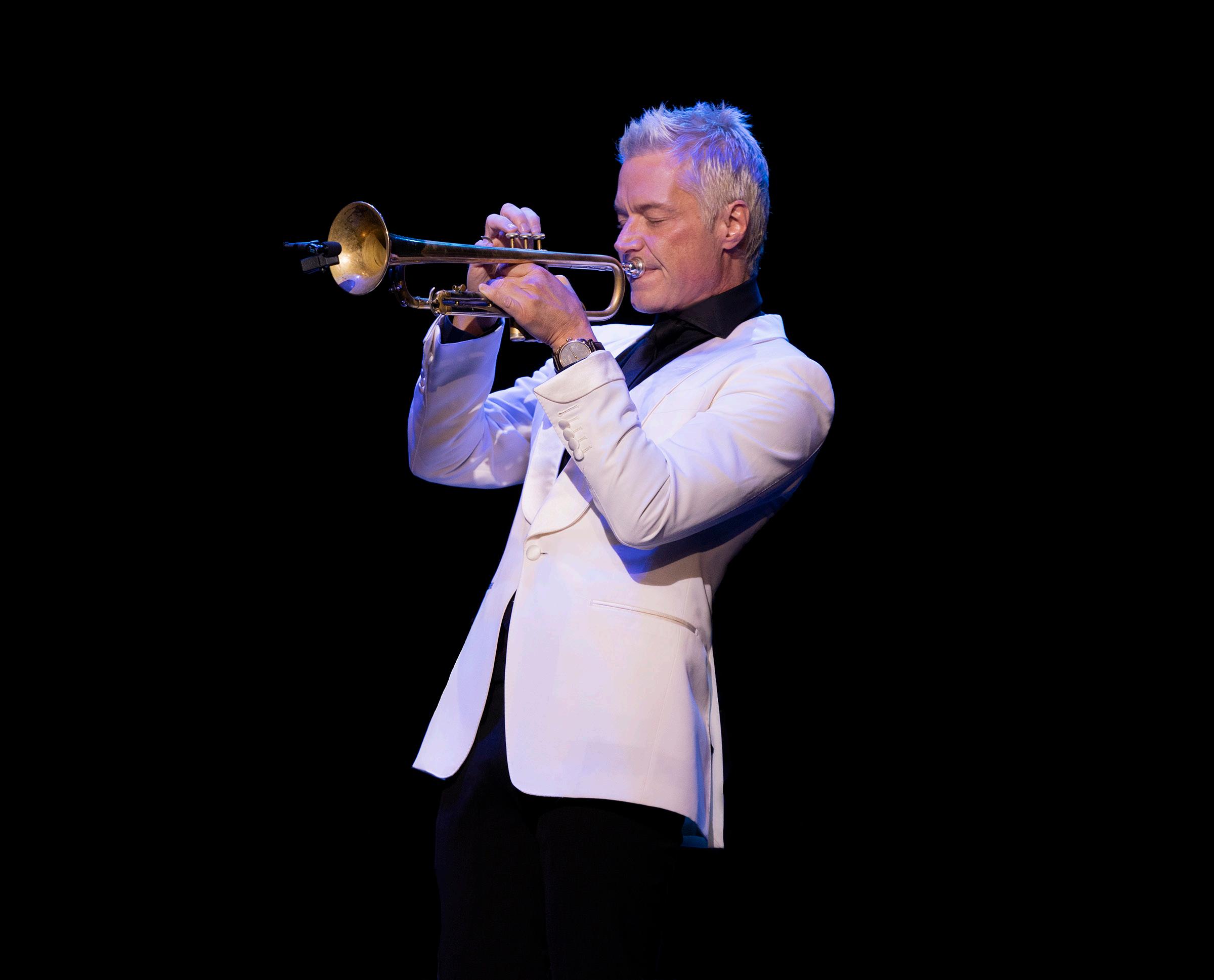
Friday, October 13 | 7:30 PM
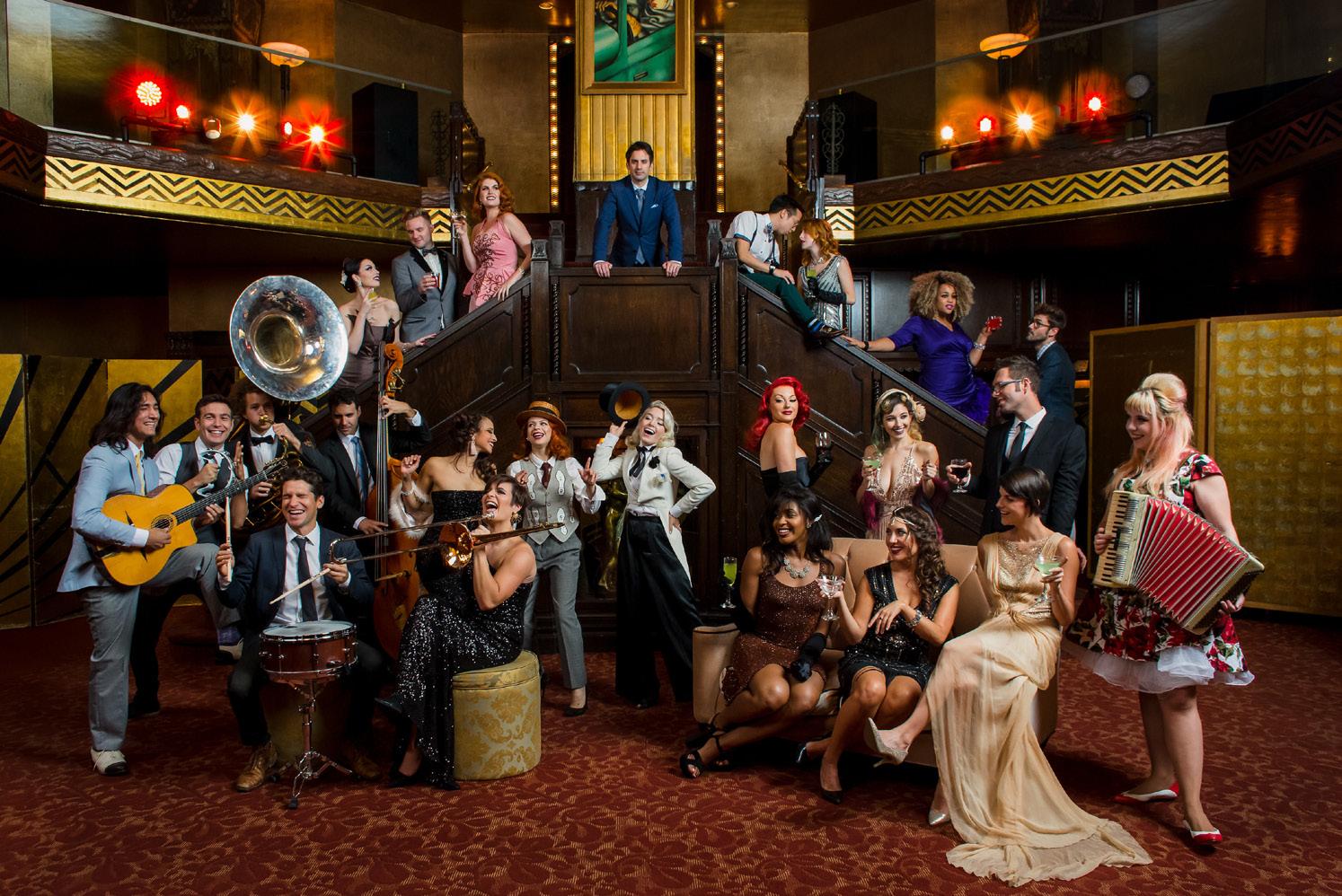

 DAVE HUNZIKER
GEORGE BULARD AND CLAY BILLMAN
DAVE HUNZIKER
GEORGE BULARD AND CLAY BILLMAN

Everyone remembers the 2004 Final Four run. Oklahoma State fans have fond memories of Big 12 regular season and tournament championships, and an amazing 11-game winning streak in conference play that revealed the full potential of the 2003-04 Cowboy basketball team. But to develop an appreciation for just how remarkable this team was, you must remember how the roster was constructed.
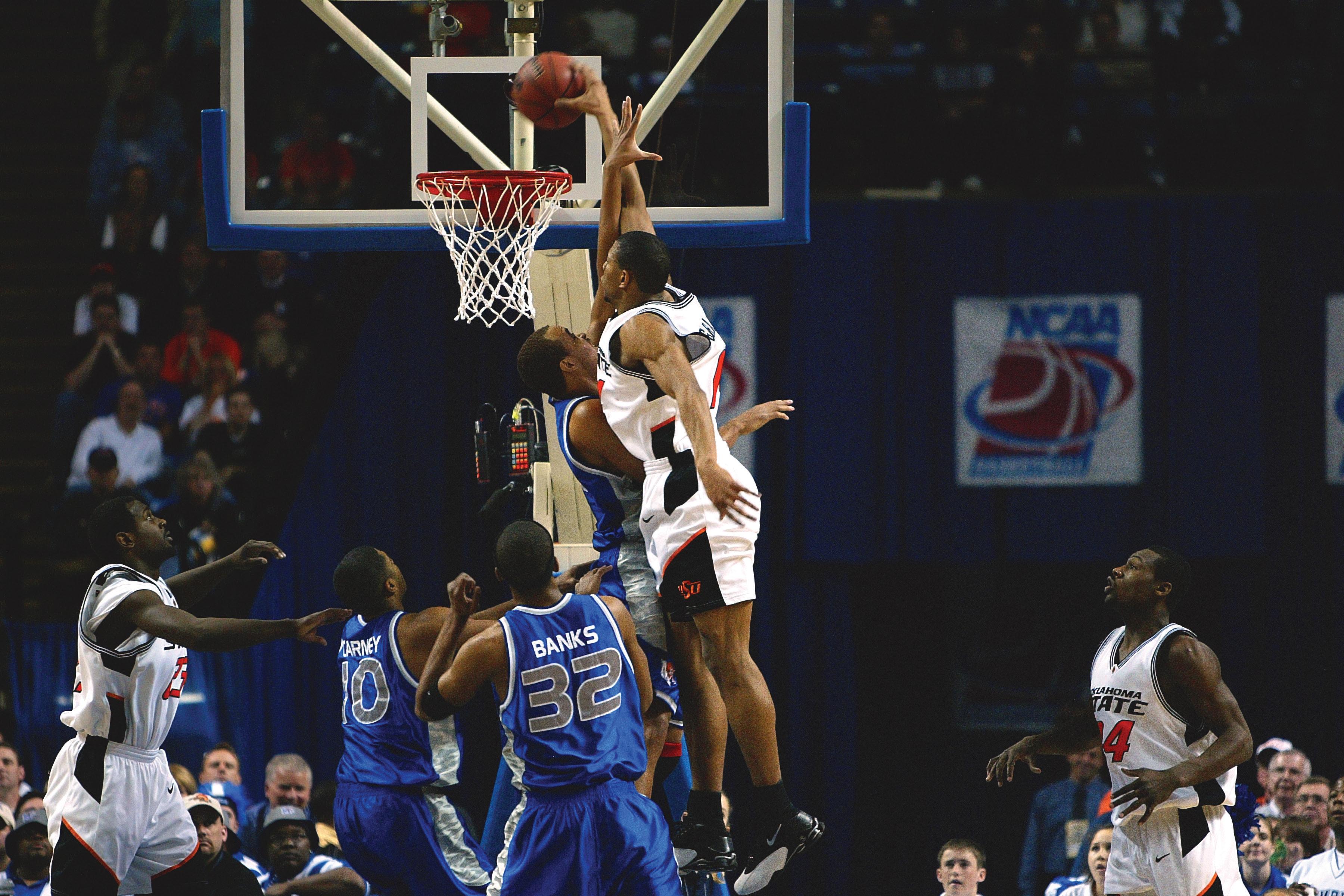
There are so many things that fell into place in the building of that team. The removal of just one sequence likely would have changed history.
The Graham twins, Joey and Stevie, played their first two years at UCF before deciding to transfer after the 2001-02 season. They visited Kansas and Oklahoma before coming to Stillwater. The Grahams had decided against Kansas, and a snafu with the OU basketball sta left them frustrated as they left their visit in Norman. They then came to Stillwater and found their new home: Oklahoma State.
If the Grahams had ended up in Lawrence or Norman…?
What most people don’t know is that Joey Graham was not on scholarship his first year at Oklahoma State. As things turned out, there was one scholarship available for the twins, and since Joey was eligible for a little academic scholarship money and Stevie was not, the family made the decision that Stevie should take the basketball scholarship and have Joey pay his own way. Joey, along with another transfer, Daniel Bobik, had a summer job working for Stillwater businessman Rusty Shaw, the founder of the OnCue convenience store chain. Graham and Bobik did everything from digging ditches
to helping Shaw renovate his stores, which included moving freezers and knocking out walls. The family also took out an additional mortgage to help pay for Joey’s first year at OSU.
Keep in mind that Joey Graham was recruited by several powerhouse schools out of high school in Florida, including North Carolina. A few years later, he was paying his own way to school and digging ditches in Stillwater, Okla. Cowboy fans should be thankful that Joey was so committed to Eddie Sutton and Oklahoma State basketball.
Truthfully, John Lucas should have never ended up in Stillwater. He averaged 13.3 ppg in 2002-03 at Baylor on a team that finished 14-14 and upset the No. 13 Cowboys, 74-72, in Stillwater. Lucas’s playing time diminished late in his sophomore year and the thought of a transfer was certainly on his mind.
The event of June 12, 2003, sped up that process. Baylor basketball player Patrick Dennehy was murdered by his teammate Carlton Dodson, leading to an extensive additional NCAA investigation which in turn led to numerous NCAA sanctions. In a highly unusual move, the NCAA allowed any member of the Baylor team to transfer without penalty, thus becoming immediately eligible at their new school. Even more unusual was the fact Lucas didn’t arrive on campus until just before the start of classes for the fall semester. The Cowboys had their much-needed point guard.
But they nearly had another one that could have resulted in Lucas enrolling elsewhere.
Patrick Sparks , a star at Western Kentucky, decided to leave WKU in the spring of 2003 when his head coach, Dennis Felton , accepted the head coaching position at Georgia. Sparks’s first visit upon landing his release was to Stillwater in early May, and the OSU coaching sta was very interested in the point guard who had helped lead WKU to a top-25 ranking, an NCAA Tournament berth and a shellacking of despised rival Kentucky in WKU’s season opener in Rupp Arena.
But the lure of a chance to play for the storied in-state rival was too much for Sparks. He chose to attend Kentucky as walk-on for his first season and went on to have a solid career with the Wildcats.
If Sparks comes to OSU, does John Lucas come as well? Sparks would have sat out the 2003-04 season as a transfer. But would Lucas, who had two years of eligibility remaining after his transfer, have chosen OSU if Sparks were in town. It’s highly unlikely.
The Grahams, along with BYU transfer Daniel Bobik,
Once the season began for the 2003-04 Cowboys, it was hardly a smooth path. Most notable among the bumps was an embarrassing 76-71 loss to BYU in Salt Lake City on Dec. 7. It wasn’t that the Cowboys lost, it was how they lost. OSU was outrebounded 44-18. In fact, Cougar center Rafael Araujo had almost as many rebounds (17) as the Cowboys had as a team. That loss led to one of the most unique weeks in Oklahoma State basketball history.

“When we found out that we were outrebounded the way that we were, we had a feeling that Coach Sutton was going to do something, we just didn’t know what,” Graham said. “We thought that maybe we would practice late that night when we got home.”
It was much more than that.
The team flew commercially to BYU, landing in Tulsa late on Saturday night before boarding a bus to return to Stillwater. I had the pleasure of sitting in the seat behind assistant coaches Sean Sutton and James Dickey for the
“We thought it was a joke,” Graham said. “We had no idea that he was serious.”
But there was certainly an entertaining element to it. After Sean had delivered the news of the football gear to the team, he went and leaned up against a wall. I was concerned that perhaps he was feeling ill and asked if he was okay. He looked up laughing. He was just fine.
“I couldn’t help but laugh, but I did not want the guys to see me laughing,” he told me. “This is going to be great (laughing). You need to make sure that you’re at practice to see this.”
Practice was unique and highly entertaining to say the least. South African center Frans Steyn, who had a rugby background, dominated, crashing into his teammates, and knocking them around like pinballs. But the sessions didn’t bother the Grahams, either.
“My brother and I both had a football background,” Graham said. “I was excited because I was one of the bigger guys on the team, and I wanted to go out and actually hit somebody. My brother liked to start fights in practice anyway, so he was fine with it. But there were some other guys, like John Lucas and Tony Allen, who did not want to do it.”
Allen apparently didn’t like it at all. As the first practice session was close to ending, Allen expressed to Sean Sutton that he was getting very hot.
“So after he said that, we practiced 30 minutes longer,” Sean Sutton said. “Tony’s comment proved the exact point we wanted to make. We needed to make this team tougher. Our football team would practice in 100-degree heat day after day in the preseason and we were complaining about being too hot in an air-conditioned arena in December. That didn’t go over well.”
But following the basket-brawl practice sessions, the team went on to win each of its six remaining non-conference games in blowout fashion, winning each by at least 15 points. But then came another fork in the road.
OSU opened conference play at Texas Tech against a very good Red Raider team. Tech blew out the Cowboys, 83-62, forcing 21 OSU turnovers while shooting 53 percent from the field. There was concern regarding chemistry and whether the pieces of the squad would ever really fit together.
Coach Sutton was about to unload on his team but was stopped by Tony Allen. Allen, who went on to become the Big 12 player of the year, told his head coach that he would get things handled. Allen apparently made it very clear to his teammates that things had to improve, and that he had no intention of having his career end on a low note. Allen set a tone with the squad.

“The Tech game was a defining moment as far as us figuring out what we needed to do to be a great team,” Graham said. “It was a building block. We figured out specific positions, roles and plays that helped us get better.”
The Cowboys returned home at mid-week to steamroll Oklahoma in Bedlam, 77-56. But an even greater sign of the coming ascension was displayed the following Saturday in Manhattan.
Kansas State was struggling. The Wildcats were amid a 12-year absence from the NCAA Tournament. K-State was 8-4 entering the game with OSU. Despite the Cowboys’ recent domination of the series, Coach Sutton was not fond of facing the Wildcats. He told me each time we faced the Wildcats during that time how much he despised defending the triple post o ense, which was brought into prominence by former KSU head coach Tex Winter and was utilized in 2004 by then Wildcat coach Jim Wooldridge
For the first 25-30 minutes, the Wildcats basically did whatever they wanted. KSU shot 46 percent in the first half and led by 16, 50-34 early in the second half. For the second time in a week, yours truly started to worry that this OSU team might not make the NCAA Tournament.
But Allen and Lucas took over o ensively, and defensively, the Cowboys buckled down. OSU held K-State to just one field goal in a 12-minute span and a Lucas layup gave OSU its first lead with just over two minutes to go.
Tony Allen blocked Jarrett Hart’s potential game-winning three pointer at the buzzer and OSU had escaped Manhattan with a 57-56 win.
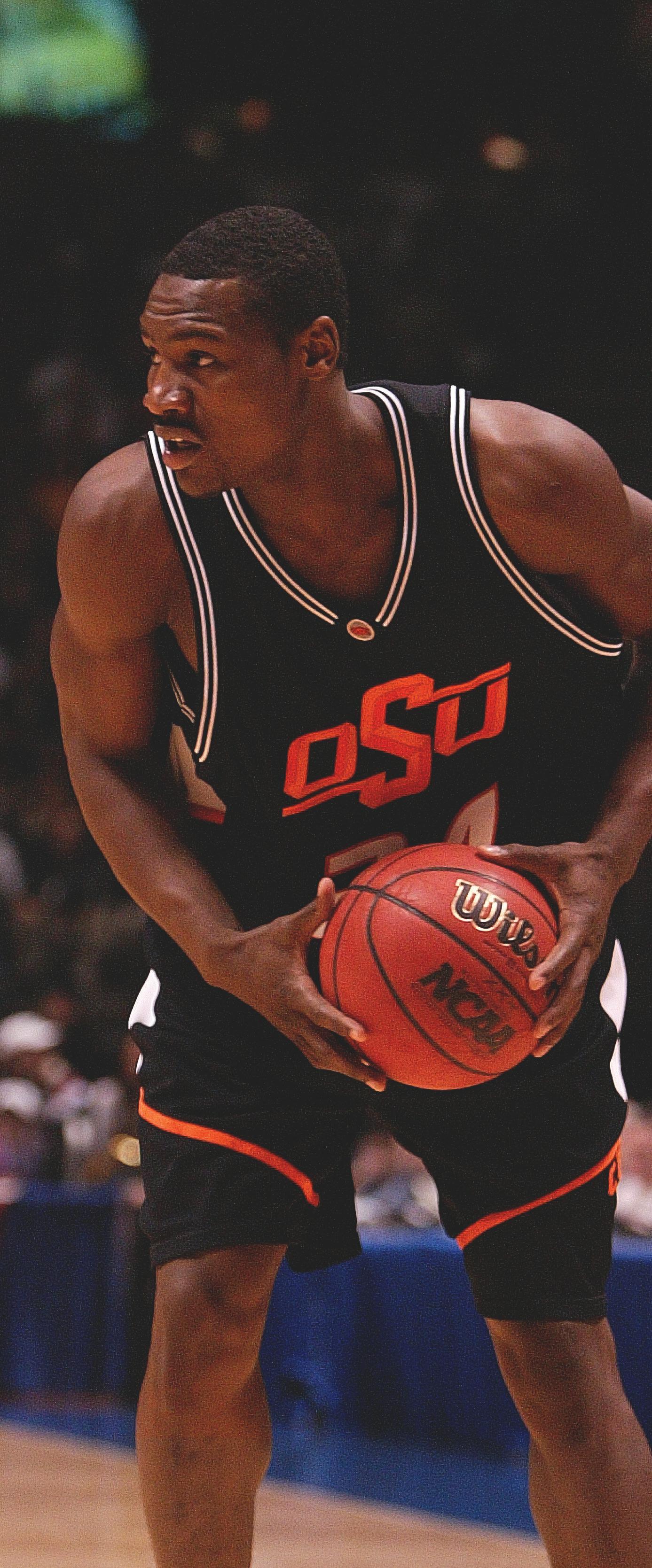
I drove on my own to Manhattan that day, and long-time OSU athletic sta er Matt Grantham had made the journey with me. As we pulled up to get our food from the drive-thru window at Wendy’s in Manhattan, I told Grantham that we might be ready to go on a big winning streak, and if the team did something special, we had witnessed the turning point that evening in Manhattan.
Little did I know how things were about to explode. OSU went on an 11-game streak, posting another monumental victory, this one over Texas in Austin the following Saturday for the third win of the run. The pieces were coming together, and OSU was flexing its muscle as not only a contender to win a loaded Big 12, but perhaps as a Final Four dark horse as well.
The first weekend of February sticks in my mind as significant. OSU traveled to Ames to face Iowa State in one of those old Big 12 Network 12:45 games, and as is often the case, it was cold and snowy in Ames. The team entrance to Hilton Coliseum is a concrete ramp that goes almost straight downhill, a journey that is very treacherous in ice and snow. Everyone was concerned about Coach Sutton going down the ramp, so a group of us built a tight circle



The path was not an easy one. OSU would have to beat four conference champions to reach the Final Four: Eastern Washington (Big Sky), Memphis (Conference USA), Pittsburgh (Big East) and the Cinderella team of 2004, St. Joseph’s of Philadelphia (Atlantic 10), which went undefeated (27-0) in the regular season before losing to Xavier in the Atlantic 10 tourney. St. Joe’s was awarded the number one seed. The good news was that the Cowboys would start their quest close to home at Kemper Arena in Kansas City.
OSU was sluggish in the first half of its NCAA Tourney opener against Eastern Washington. The Cowboys were tied at half before turning things up in the second half on their way to a 75-56 win. That set up a second-round game against a very young, but very talented Memphis team coached by John Calipari.
There were many experts that projected a Memphis upset. It only took the Cowboys a few minutes to make those experts look foolish. OSU jumped out a 21-8 lead, and in the midst of the run, Joey Graham delivered what remains one of the most impressive dunks that I’ve ever seen. Graham took the ball at the top of the key, drove the lane and nearly ripped the rim o the backboard, much to the delight of a huge OSU following in Kansas City.
Legend has it that shortly after that play, during a time out, Calipari was pleading with his Memphis team to get back in the game. His players looked stunned as he addressed them midway through the first half. He continued to tell his team that they could get back in the game, that everything was okay. His players weren’t buying it.
“You’re not out there, Coach,” quipped Sean Banks in the huddle. Banks was no ordinary player. He was the Conference USA freshman of the year and one of the best freshmen in college basketball in 2004. The tone of the game was set and it didn’t change. The Cowboys led by as many as 27 and cruised to a 70-53 win.
That set up an East Regional semifinal game with Pittsburgh, the bruising champions of the Big East. The Panthers were typical of Big East teams in those days, very physical, with incredibly active rebounders, and super tough high-basketball IQ guards who could control a game if you let them. It was a plodding, physical style that Oklahoma State really didn’t see in the Big 12 at that time.
James Dickey’s brother, Randall, was in-between coaching gigs at Washington State and UTEP during the 2003-04 season and made the journey to cheer on his brother’s team and his former employer. Randall Dickey had been an assistant coach for Coach Sutton at OSU when the Cowboys reached the Final Four in 1995.
Former Cowboy Bryndon Manzer was in the infancy of his broadcasting career and was on assignment for Stillwater Radio to cover the regional. We shared a hotel room
that week. On game day, we meandered downstairs for breakfast. Manzer spotted Dickey, who was on sta at OSU when Manzer was a Cowboy and invited him over to join us.
I asked Randall what he thought about the game. His analysis: it was going to be a rough, physical game and the Cowboys had to hang in there on the boards. (We always felt better about our chances against rebounding teams because we had our own warrior on the glass, Ivan McFarlin.) Then he unleashed his prophecy … he told us that the game would be tight until about the six-minute mark of the second half, and then the Cowboys would slowly pull away. He surmised that the Cowboys would wear the Panthers down because Pitt wasn’t used to having to work so hard on the o ensive end against intense defensive pressure. As it turned out, OSU was something di erent for Pitt as well, as the Big East was loaded with teams that played zone and walked the ball up the floor.
OSU and Pitt were tied at 42 with 7:51 to play. Moments later, Oklahoma State began a 17-5 run and as Dickey predicted, slowly pulled away. The result was a 63-51 win and a berth in the regional final with St. Joseph’s, who would in essence be playing a home game at the Meadowlands in East Rutherford, N.J.
I was familiar with St. Joseph’s star, All-America guard Jameer Nelson. Nelson and the Hawks had played at Western Kentucky in December of 2000 during my one season at WKU. The Hawks beat our NCAA Tournament Hilltopper team that night on WKU’s home floor. Nelson was great then, so I knew firsthand just how good this guy was. He was really, really, really good.
The Elite Eight matchup was a classic, but I always felt good about it even though St. Joseph’s was up 33-27 at halftime. But there was no panic in the locker room.
“My dad told the guys in the locker room at halftime to relax,” Sean Sutton said. “He knew how mature our guys were and just wanted them to calm down. He assured them that we would play better in the second half.”
Sure enough, the Cowboys did play better. Much better. Daniel Bobik and John Lucas made threes in the opening minutes as OSU started the second half with a 16-4 run to take a 43-37 lead.
I did not feel so good about the game when Pat Carroll made a three pointer to put St. Joseph’s up, 61-59 with 29 seconds left. But in fitting fashion, a team with a roster that came together in a bizarre manner earned its Final Four berth on a very unusual play.
Joey Graham had the ball to the right of the top of the key, and while starting a move, lost his shoe and fumbled the ball. The St. Joseph’s defenders, eyeing a chance to get a game closing steal, went hard at the ball, but Graham regained possession, and in the midst of the chaos, saw a
achieved.
The ultimate irony came a week later when the Cowboys faced Georgia Tech in the Final Four. OSU trailed for much of the game and tied the contest at 65 on a Lucas three pointer. The Cowboys, a team made up of seven transfers and was picked fifth in the Big 12 pre-season poll, were a play away from playing for a national title.
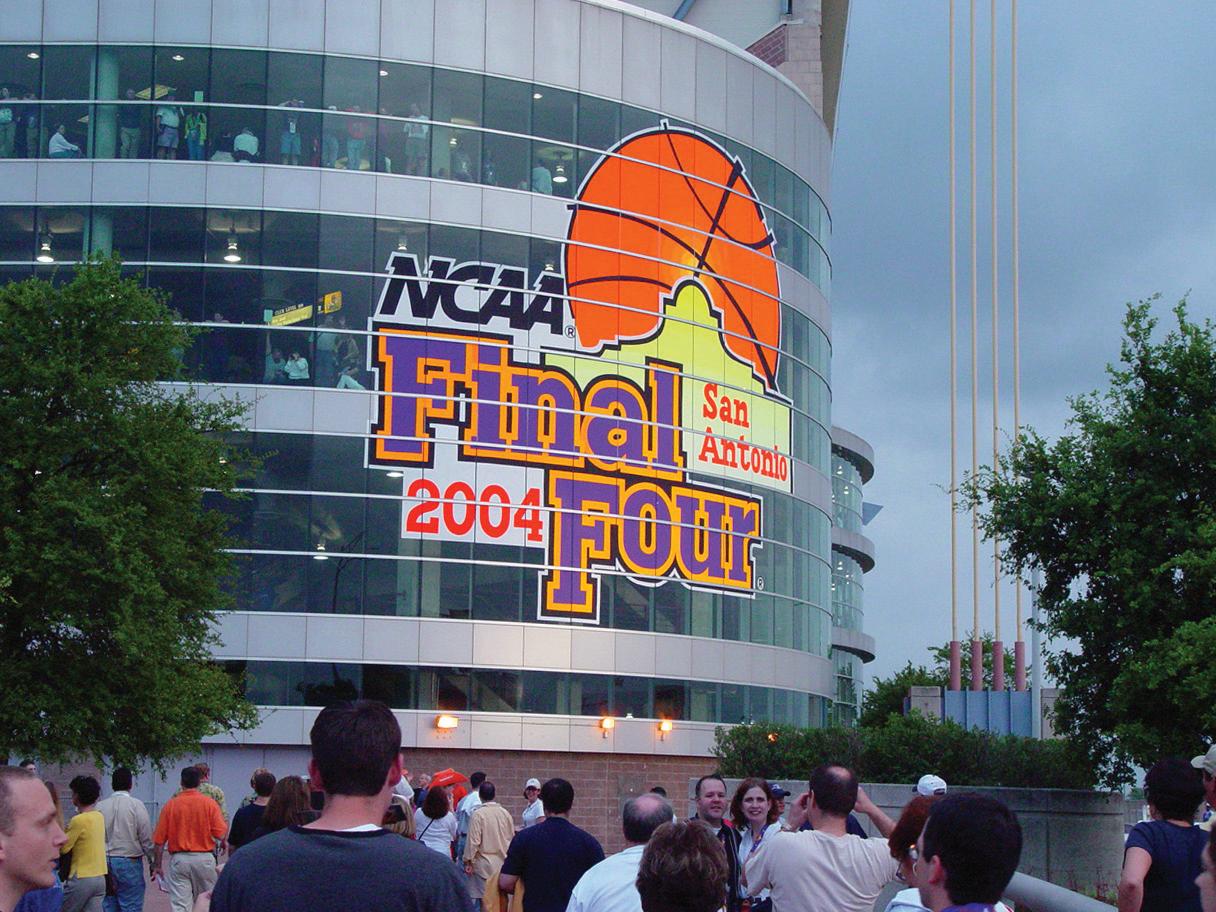
Ironically, the Cowboys were beaten by a transfer — who was supposed to be at Oklahoma State.
Will Bynum, who started his career at Arizona, drove past John Lucas and made a lay-up to give the Yellow Jackets a 67-65 win and a berth in the national championship game. Bynum had verbally committed to OSU after deciding to transfer mid-year from Arizona in January, 2003. He was supposed to be on his way to OSU in early January, but he never showed up. He traveled on to Atlanta to Georgia Tech, and a little more than a year later, ended Oklahoma State’s magical season at the Alamodome in San Antonio.
When it was all over: 31 wins, 4 losses.
A Big 12 regular season title.
“You always look back and think, we could’ve won it,” said Graham. “Looking back, we left that unfinished. I honestly think that we matched up better with UConn than we did with Georgia Tech. I think we could’ve beaten them. It will always
“That team, more than any of our OSU teams, had all of the ingredients to win a national championship,” Sean Sutton said. “That group loved being around each other and didn’t care who got the credit. It’s the best group of players that I’ve ever had the chance to coach.”
It was a wonderful season full of memories that will forever be entrenched in the hearts of Cowboy fans. It’s especially amazing when you consider that most of the key players on the 2004 squad were not in Stillwater until at least the fall of 2002.

Delivering greatness when it’s least expected. It’s the Cowboy Way
And the 2003-04 Cowboys delivered greatness in an historic way.
 Eddie Sutton cuts down the nets at Gallagher-Iba Arena after capturing the 2004 Big 12 regular season championship. 55 POSSE
Eddie Sutton cuts down the nets at Gallagher-Iba Arena after capturing the 2004 Big 12 regular season championship. 55 POSSE
SEE ALL THE NEW UNIFORM COMBINATIONS: okstate.com/pastpresentfuture

Next generation football uniforms are coming to Oklahoma State this fall. Combining the past, present and future of OSU football, the new base look for the Cowboys combines current OSU logos and branding with an unmistakable nod to teams of the past. The modern version of the jersey comes in orange, black and white, with mix-and-match pants to maximize versatility.

OSU is one of only a small group of schools wearing Nike FUSE (Field Utility Special Edition) uniforms, combining research-backed innovation with a precision fit to allow ultimate performance on the field.
The Cowboys who wear this uniform will author the next chapter of Oklahoma State football. The next generation is here.
Cowgirl senior Morgan Bynum poses for OSU Athletics creative content specialist Cooper Peacock. The soccer squad took part in a July photo session for social media content, video board graphics and other publications.
The 2023 soccer season features a host of exciting home matches at Neal Patterson Stadium. For tickets and schedule info, visit okstate.com.



When OSU announced its scholarship endowment initiative, the athletic program was last in the Big 12. Now, more than halfway through the 10-year program, OSU leads the conference.
Baseball 10.25
FULL SCHOLARSHIP
Dennis and Karen Wing (2) | Hal Tompkins
Sandy Lee | Jennifer and Steven Grigsby
Mike Bode and Preston Carrier (2)
David and Julie Ronck
HALF SCHOLARSHIP
Sally Graham Skaggs
OSU awards 229 full scholarships to student-athletes each year at a cost of $4.5 million. Each dollar freed up through endowed scholarships goes back into our programs. Better equipment. Better facilities. Better support. Each dollar has a direct impact on the lives of our student-athletes.

This is the list of all the generous supporters who have helped to provide a bright Orange future.
QUARTER SCHOLARSHIP
Bryant and Carla Co man
David and Grace Helmer | Jill Rooker
Martha Seabolt | Dr. Scott Anthony
John and Beverly Williams
Richard and Lawana Kunze
Equestrian
1.25
FULL SCHOLARSHIP
Baloo and Maribeth Subramaniam
QUARTER SCHOLARSHIP
David and Gina Dabney
Football
33.0
FULL SCHOLARSHIP
Bob and Kay Norris
Bryant and Carla Co man / The Merkel Foundation
David LeNorman | Dennis and Karen Wing (2)
Dr. Mark and Beth Brewer
Ike and Marybeth Glass
Jack and Carol Corgan
Jim Click | John and Gail Shaw
Ken and Jimi Davidson | Leslie Dunavant
Mike and Kristen Gundy
Mike and Robbie Holder
Ron Stewart | Ross and Billie McKnight
Sandy Lee | Tom and Sandra Wilson
Wray and Julie Valentine
James and Mary Barnes
HALF SCHOLARSHIP
Cindy Hughes | Donald Coplin
Doug Thompson | Ed and Helen Wallace
R. Kirk Whitman | Greg Casillas
Jim and Lynne Williams / John and Patti Brett
Mike and Judy Johnson | Sally Graham Skaggs
State Rangers | Tom Naugle | Nate Watson
QUARTER SCHOLARSHIP
Al and Martha Strecker
Arthur “Andy” Johnson, Jr.
Arthur Couch | Barry and Roxanne Pollard
Bill and Ruth Starr | Brad and Leah Gungoll
Brian K. Pauling
Bridgecreek Investment Management LLC
Bryan Close | David and Cindy Waits
David and Gina Dabney | Dr. Berno Ebbesson
But we’re not finished yet.
They are our Honor Roll.
Dr. Ron and Marilynn McAfee
Eddy and Deniece Ditzler | Flintco
Fred and Janice Gibson | Fred and Karen Hall
Howard Thill | James and LaVerna Cobb
Jerry and Lynda Baker | John P. Melot
Jerry and Rae Winchester
John S. Clark | Ken and Leitner Greiner
Kent and Margo Dunbar | Paul and Mona Pitts
Randall and Carol White | Shelli Osborn
Roger and Laura Demaree
Steve and Diane Tuttle
Tony and Finetta Banfield
General
1.25
HALF SCHOLARSHIP
Terry and Martha Barker
QUARTER SCHOLARSHIP
David and Judy Powell
Kenneth and Susan Crouch
Sally Graham Skaggs
Graduate Athlete
0.75
QUARTER SCHOLARSHIP
Bob and Joan Hert | Neal Seidle
Tom and Cheryl Hamilton
Men's Basketball
23.5
FULL SCHOLARSHIP
Baloo and Maribeth Subramaniam
A.J. and Susan Jacques
Bill and Marsha Barnes
Brett and Amy Jameson
Calvin and Linda Anthony
Chuck and Kim Watson
David and Julie Ronck (1.25)
Dennis and Karen Wing (2)
Douglas and Nickie Burns
Gri and Mindi Jones
James and Mary Barnes | Jim Vallion
Ken and Jimi Davidson
Kent and Margo Dunbar | KimRay Inc.
Sandy Lee | Mitch Jones Memorial
HALF SCHOLARSHIP
David and Julie Ronck
Dr. Mark and Susan Morrow
Jay and Connie Wiese | Sally Graham Skaggs
Stan Clark | Billy Wayne Travis
Holloman Family
QUARTER SCHOLARSHIP
Dr. Scott and Lynne Anthony
Gary and Sue Homsey
Michael and Heather Grismore
Rick and Suzanne Maxwell
Robert and Sharon Keating
Steve and Suzie Crowder
Terry and Donna Tippens
6.25
FULL SCHOLARSHIP
David and Julie Ronck
Dennis and Karen Wing
Jack and Carol Corgan
Genevieve A. Robinson
Baloo and Maribeth Subramaniam
HALF SCHOLARSHIP
Simmons Bank
QUARTER SCHOLARSHIP
Bob and Elizabeth Nickles
Garland and Penny Cupp
Richard and Joan Welborn
Men's Tennis
0.75
QUARTER SCHOLARSHIP
Tom and Cheryl Hamilton
HALF SCHOLARSHIP
Jim McDowell Men's
Men's Track
0.75
QUARTER SCHOLARSHIP
Dr. Mark and Susan Morrow
Susan Anderson | Ken and Leitner Greiner
HALF SCHOLARSHIP
Mary Jane and Brent Wooten
Soccer
1.0
FULL SCHOLARSHIP
James and Mary Barnes
Softball
0.75
QUARTER SCHOLARSHIP
Tom and Cheryl Hamilton
Richard Melot
Ann Dyer
7.25
FULL SCHOLARSHIP
Brad and Margie Schultz
Ken and Jimi Davidson
Mike Bode and Preston Carrier
HALF SCHOLARSHIP
Baloo and Maribeth Subramaniam
Don and Mary McCall
John and Caroline Linehan
Calvin and Linda Anthony
Mike Bode and Preston Carrier
QUARTER SCHOLARSHIP
Bill and Roberta Armstrong
Bill and Sally Cunningham
Donald Coplin | Jill Rooker
Richard and Linda Rodgers
Jo Hughes and Deborah J. Ernst
Richard Melot
Women’s Golf
3.0
FULL SCHOLARSHIP
Baloo and Maribeth Subramaniam
Genevieve A. Robinson
Louise Solheim
HALF SCHOLARSHIP
David and Julie Ronck | Dena Dills Nowotny
QUARTER SCHOLARSHIP
Amy Weeks | Kent and Margo Dunbar
Women’s Tennis
0.5
QUARTER SCHOLARSHIP
Jamie Maher
Richard Melot
Wrestling
11.25
FULL SCHOLARSHIP
A.J. and Susan Jacques
Bruce and Nancy Smith
Chuck and Kim Watson
Lon and Jane Winton
OSU Wrestling – White Jacket Club /
Gallagher Endowed Wrestling Scholarship
OSU Wrestling – White Jacket Club /
Myron Roderick Endowed Wrestling Scholarship
OSU Wrestling – White Jacket Club /
Ray Murphy Endowed Wrestling Scholarship
OSU Wrestling – White Jacket Club /
Tommy Chesbro Endowed Wrestling Scholarship
The Cobb Family
HALF SCHOLARSHIP
Mike and Glynda Pollard
Mark and Lisa Snell
Bobby and Michelle Marandi
QUARTER SCHOLARSHIP
Danny and Dana Baze / Cory and Mindy Baze
Kyle and Debbie Hadwiger
John and Beverly Williams | R.K. Winters
To learn more about scholarship opportunities and how you may contribute, please contact:
Larry Reece (405-744-2824)
Matt Grantham (405-744-5938)
Daniel Hefl in (405-744-7301)
Shawn Taylor (405-744-3002)
Football fans will notice some significant upgrades to gameday comfort and convenience at Boone Pickens Stadium this fall.
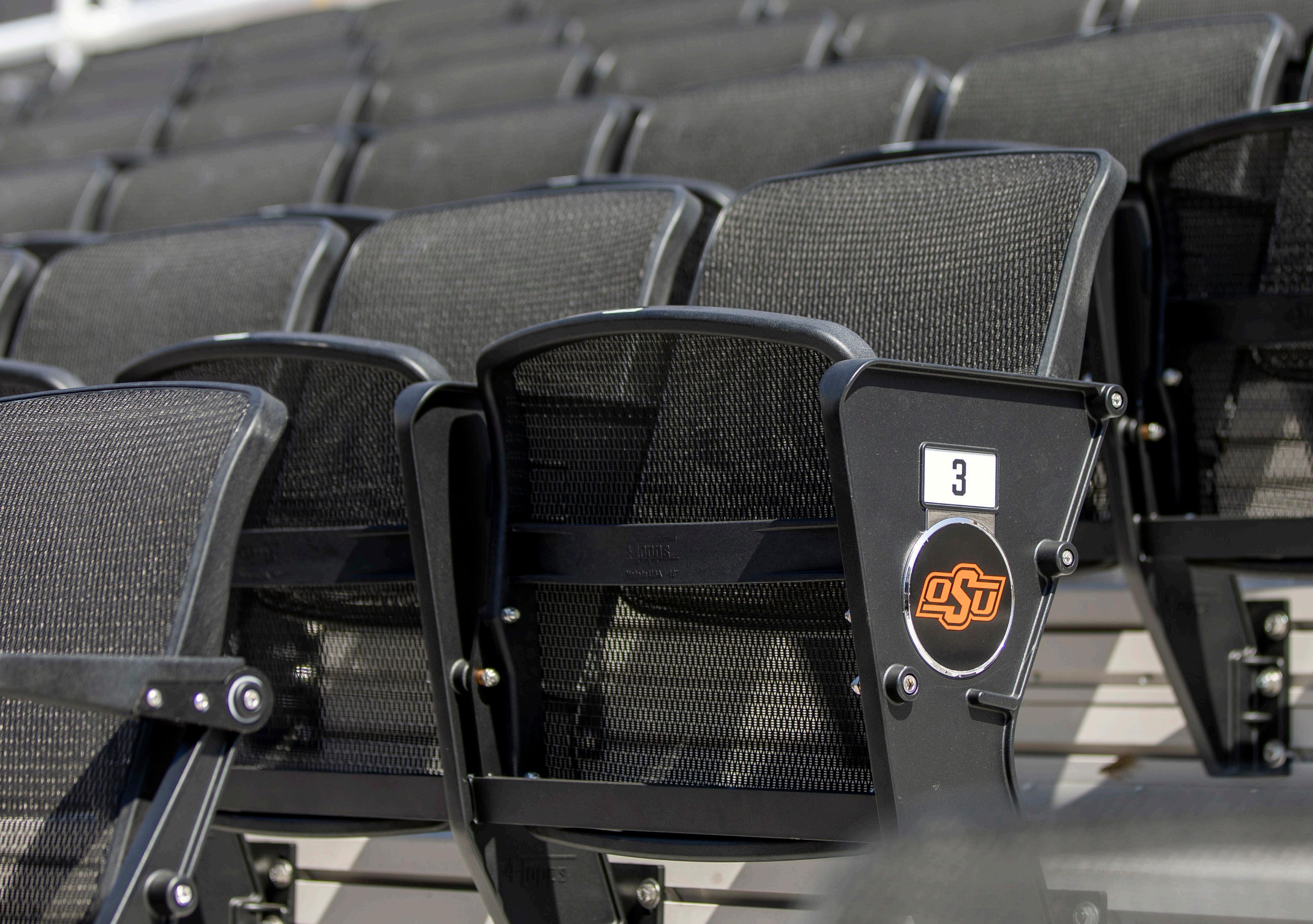
Focusing on the north side seating areas, the first phase of a multi-year, $55 million upgrade includes AirFlow mesh chairbacks in midfield sections. These state-of-the-art seats are designed to stay cooler in the Oklahoma sun and dry quickly after rains. The remaining north stands feature comfortable, contoured bleachers to match the west endzone. Lower vomitories were cut to align with existing upper sections, and additional aisles with handrails were added for easier ingress and egress. New wheelchair and companion seating areas are also included. Underneath the north stands, bright LED lights, video screens and grab-and-go concessions will liven up the plaza level.
Similar renovations will begin on the south side immediately following the 2023 season.

 Story by
Story by

It was a banner year for Oklahoma State cross country and track and field.

• 2022 NCAA men’s cross country runner-up and Big 12 champion
• 2022 NCAA women’s cross country fourth-place finisher and Big 12 champion
• 2023 Big 12 women’s indoor track and field team champion
• 2022-23 fourth-place finisher for USTFCCCA
Men’s Program of the Year — a metric that combines a school’s finish in cross country, indoor track and field and outdoor track and field
• Between men’s and women’s cross country, indoor track and field and outdoor track and field, OSU produced 30 All-Americans in 2022-23 alone — 18 men and 12 women
• On the men’s side, Fouad Messaoudi won the NCAA 3,000 meter title and teamed up with Charlie Bartholomew, Juan Diego Castro and Ryan Schoppe to win the NCAA Distance Medley Relay
It hasn’t always been like this, but to look at the program now, it sure passes the eye test for a national power.
How did this happen?
How could the Cowgirls upset a No.1-ranked Texas program and others to win the 2023 Big 12 indoor championship without even having an indoor facility for training?
Outrageous, right?
When looking at national program of the year, how could the Cowboys finish ahead of programs with the financial backing and pedigree of Oregon, USC, UCLA, Texas, Florida and others?
“It was one step at a time,” said Dave Smith, OSU’s director of track and cross country.
Smith, you see, was not just speaking about this past season. He was speaking in larger terms about the rise of Oklahoma State Cross Country and Track and Field.
Rewind to 2007, Smith’s second year as men’s cross country head coach.
The landscape was di erent back then. With 11 consecutive Big 12 team titles to its credit, Colorado was the conference’s flagship program. For perspective, since the formation of the Big 12 in 1996, Colorado was the only men’s cross-country team to ever hoist the trophy. With an average Big 12 finish of third place over the previous five years, OSU was good, but not at the level of the Bu aloes.
To no one’s surprise, Colorado won its 12th straight title at the 2007 Big 12 Championships and OSU took third.
Something happened following that meet and even Smith doesn’t have a good answer for what it was.
But that something was everything
The Cowboys of 2007 had an All-America-level performer in Ryan Vail but were not taken seriously as contenders at the NCAA Championships.
At the 2007 NCAA Championships, though, the Cowboys placed third — four spots better than Colorado.

“We were not the third-best team,” Smith said. “We were maybe the 15th-best team. Other than Ryan Vail , none of it made sense. None of them had run like that before, and none of them did it after.”
Vail placed 11th at the national meet and teammate David Chirchir made a massive surge from the back of the pack during the second half of the race to finish 21st. While those two were expected to lead the way for the Cowboys, they were not expected to place as highly as they did among all competitors. Smith said that Vail and Chirchir's respective All-America finishes put the Cowboys in good position at the top of the lineup, but the performances of Daniel Watts , Matt Barnes-Smith and David Jankowski were the di erence in OSU’s finish.
“In the second half of the race, something happened, and it was magical and unexpected,” Smith said. “When the race was over and we were at the finish line, I thought maybe they missed us when they announced the 15th-place team, then the 10th, then seventh. Did we finish top 6? That hadn’t
Fernandez was more than the nation’s top recruit though. The Californian was one of the most hyped high school prospects in history and was very well known in the running community long before ever stepping foot in Stillwater.
Just having him on the roster brought a new level of attention to Oklahoma State and helped the Cowboys elevate into a featured program in the sport.
Joining Fernandez in the OSU recruiting class of 2008 was another star in Colby Lowe , who, had it not been for Fernandez’s towering visibility, may have been the best incoming recruit in Oklahoma State history.
It was one step at a time.
—DAVE SMITH

His first meeting with the women produced an unexpected result and represented the first big step in the rise of the Cowgirls.
“I told them what the expectations were and said, ‘For most of you, that means you’ll want to go,’” Smith said. “One girl had already transferred out before that. A couple others left as the news spread, but about 90 percent wanted to be coached like how I described. For that reason, a couple of my favorite teams were those first few years with the women.”
After the previous women’s head coach was let go, but before he was named director of track and cross country, Smith agreed to help the Cowgirls’ top performer, sophomore Mihaela Susa from Romania, as she prepared to compete as an individual at the 2009 NCAA Outdoor Championships.
He didn’t know it at the time, but that decision represented another big step.
“We’re where we are 14 years down the road because of Mihaela’s belief in me when I took over,” Smith said. “Mihaela just said ‘Hey, you tell me what to do and I’ll do it.’”
“She was doing well running the 5k and 10k, but we moved her to the 800 meters and 1,500 meters,” Smith said. “She became a first-team All-American in the mile and was first-team All-American running the DMR on a foot that she broke mid-race. She was so tough. I think she literally would have run through a wall if that is what we needed her to do. She was always receptive when I came to her with something.”
Susa had great respect for Smith because of what he was doing on the men’s side and that respect grew as he invested time and energy in her. She was already established as a leader on the team because of her performance in competition, but her buy-in and subsequent growth and success became the most authentic endorsement of Smith.
A clear example of Susa’s impact came as Smith was pursuing another eastern European standout, Natalja Piliusina from Lithuania.
“Mihaela Susa and her faith and confidence in me set the tone for everyone else,” Smith said. “Natalja was in my first recruiting class and Mihaela was instrumental in getting her here. With their intensity and ferocity, those two women changed the direction of where we were going.”
An eight-time All-American and 2013 NCAA 1,500 meter champion, Piliusina enjoyed an all-time great Oklahoma State career and proved the highest level of excellence could be achieved within an OSU women’s track program that hadn’t produced an NCAA outdoor champion in 24 years before her arrival.

In short, she made it cool to be a Cowgirl
“Mihaela was an example for Natalja because this is what can happen with trust,” Smith said. “Natalja was fiercely loyal and never questioned a thing, it was 100 percent belief. The others on the team saw that from her and it was
contagious. That helped us make up ground on the women’s side quickly. Natalja was as impactful for the women as Ryan Vail was for the men.
“ Kaela Edwards and Clara Nichols and Savannah Camacho don’t come to Oklahoma State without Natalja Piliusina. Sinclaire Johnson came after Kaela and Taylor Roe after Sinclaire. We keep getting athletes to come here because of those before. It’s the butterfly e ect.”
By any measure, the Oklahoma State-Dave Smith partnership has been a fruitful one.
His coaching success comes as a direct result of the people in his program, so finding the right people is imperative.
“When I first started here, we had very little likelihood to get top athletes, so we moved to the next tier of kids, then the next tier of kids,” Smith said. “At that third level, there are a lot of kids, and we can be choosy. We can recruit on character and personality and fit what we want to do.
“We started that way with guys like Vail, Jankowski and Alejandro Ruiz . They weren’t the blue chip, five-star guys. They were the kind of guys who you’d actually want to be with on long bus rides. That was our culture and who we attracted. Each couple years we took a step forward in what kind of talent we could attract.”
On the shoulders of the success of Smith’s early groups, the talent level in the men’s program grew, but it didn’t necessarily translate in competition. In fact, the Cowboys failed to qualify for the 2019 NCAA Cross Country Championships — a stunning development for a team that ruled the sport from 2009-12.

Smith suspects that a shift in recruiting philosophy led to the slip.
“We didn’t make nationals in 2019, and I felt like we lost equity, so we went back to going for kids we liked,” Smith said. “We brought in guys like Alex Maier , Isai Rodriguez and Victor Shitsama . They weren’t world-beaters right o the bat, but they became that.
“We have to find the right kind of kid. I want kids who value getting to bed and getting some sleep and getting their work in more than they value their social media likes because we don’t crave the limelight. We stay o the radar as long as possible and show up when it matters most.”
That recalibration helped bring the Cowboys right back into the title mix and they missed out on a fourth Smith-era NCAA team title in 2022 by the slightest of margins , finishing second only by tiebreak criteria.
2013 NCAA 3,000 meter national champion Fouad Messaoudi 2022 NCAA 3,000 meter national champion Taylor Roe
Smith credits Mike Holder as one of the greatest influences on his coaching.
“His background was in golf, but I’ve learned as much about how to coach and lead in track and field from him as anyone,” Smith said. “I heard from his former players how hard he was at practice, but he was so loose in competition. I’m more conservative and protecting against failure whereas he was the opposite — he was coaching to let it rip and go for the win, not to avoid losing. He coached that way and told me that’s how athletes prefer to be coached. That made sense to me, and I adopted that personality. He was so instrumental.”
Holder not only shaped some of Smith’s coaching philosophies, but he — and Chad Weiberg after him — have also provided Smith with something far more valuable — the freedom to be himself.
“A big part of why we’ve been able to accomplish the things we have here at Oklahoma State is the administration and the way we do things here,” Smith said. “I have coaching friends who never see their athletic director. I have others who feel constantly micromanaged by their athletic director. We don’t have either of those.

“First it was Coach Holder and now it’s Chad, they say the same thing: ‘Do what’s best for your student-athletes — always — and let the chips fall where they may.’ That gives me the freedom to develop and nurture talent and not exploit it. I want to look at each individual athlete and do what’s best for them each week of their career.
“I don’t think there are more than a handful of places where you can do that without being second guessed or micromanaged. When I sit in a home visit, I can tell a recruit that nobody will do it better than us and I firmly believe that.”
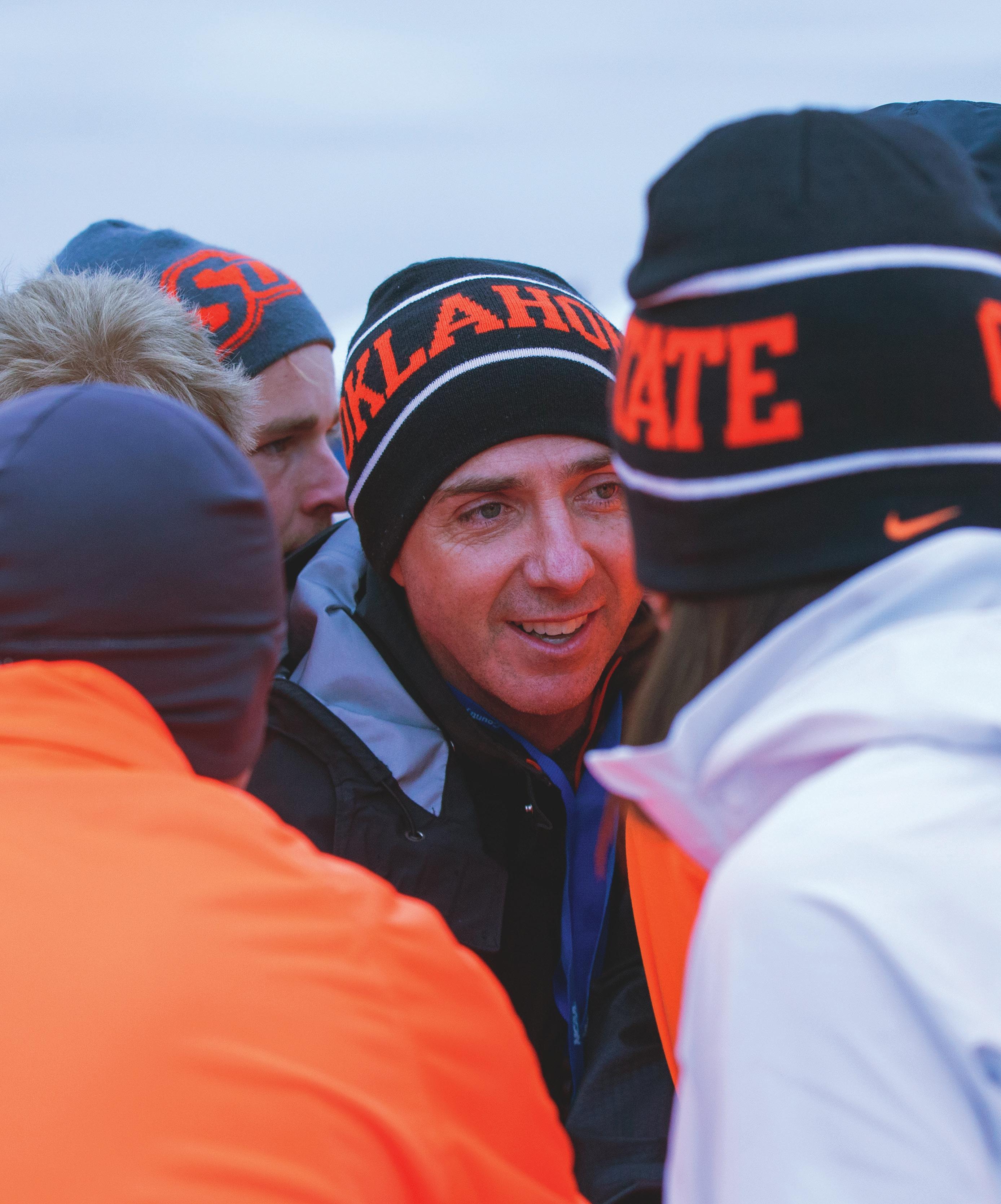
The POSSE's spring Cowboy VIP Summit featured a unique program by acclaimed author and "Whisky Advocate" columnist Fred Minnick. The OSU alumnus entertained and educated attendees (including VIPs Preston Carrier and Mike Bode, right) with "Blind Bourbon Live" — a sensory training for bourbon beginners and aficionados alike.
Earlier in the day, stakeholders received an update on a variety of topics from Athletic Director Chad Weiberg, President Kayse Shrum and coach Mike Gundy, as well as a panel of OSU student-athletes.
For more information on the POSSE Cowboy VIP program, contact Brakston Brock at 405-744-9130.







Beginning in the fall semester of 2022, eligible student-athletes began receiving $5,980 per year as part of the (STUDENT-ATHLETE ACADEMIC REWARD) FUND.
The STAR Fund incentivizes academic success as the means for eligible student-athletes to receive a financial reward stemming from the landmark Supreme Court decision in the Alston v. NCAA case. The Alston case has opened the door for student-athletes to receive additional monetary support toward the cost of their education, and the Athletic Department is committed to providing all scholarship student-athletes the chance to earn supplemental payments (based on academic performance) while enrolled at OSU. This additional expense could total up to $2.4 million per year. Gif ts given directly to the STAR Fund support this endeavor.
For more information about how you can make a game-changing gift to the STAR Fund, contact the OSU POSSE: 877-ALL-4-OSU or okstate.com/posse
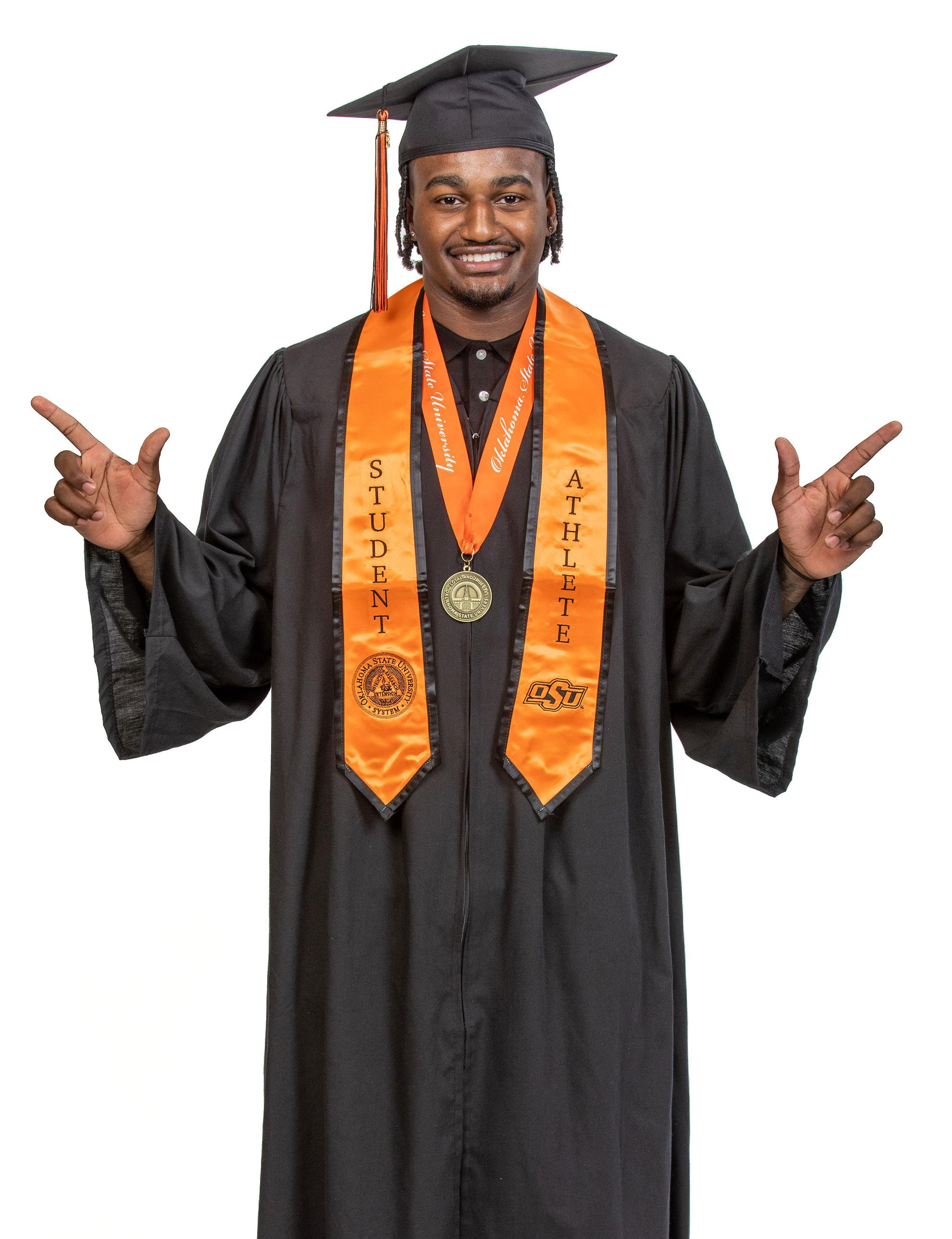
Members of the Cowgirl Softball team eagerly await the arrival of Morgyn Wynne at home plate during the 2023 Women's College World Series at USA Softball Hall of Fame Stadium in Oklahoma City. Wynne, a graduate student from Concord, Calif., homered in her final at-bat in an OSU uniform. Coach Kenny Gajewski's Cowgirls finished the season with a 47-16 record, culminating in their fourthstraight WCWS appearance.


 Senior shortshop Marcus Brown poses with pal Maculey Andrews before a Cowboy baseball game. "Mac" is the son of POSSE members and season ticket holders Josh and Shelby Andrews from Muskogee.
Senior shortshop Marcus Brown poses with pal Maculey Andrews before a Cowboy baseball game. "Mac" is the son of POSSE members and season ticket holders Josh and Shelby Andrews from Muskogee.



